




Power Quality Power and Power Factor Scarborough Care Home Systems Clean www.energymanagermagazine.co.uk JUNE 2024 INSIDE THIS ISSUE: Effective operations and monitoring of distributed energy resources See page 14 18 Choosing the right energy bureau service in 10 steps 20 Proactive battery storage solutions 28 How to optimise energy efficiency with sensor selection


WHAT DO WE DO?
the association for decentralised energy
We represent more than 160 organisations from across the energy system, bringing together businesses, local authorities, academics and more to advocate on the priorities for the UK in achieving net zero and boosting energy security.
We believe that an energy system designed around the user’s needs, enabling the right technology choice in the right place, serves everyone better.
At the ADE, our activities include:
Hosting a busy calendar of industry-leading events
Advising Government on energy policy
Briefing members on policy developments
Using our in-house research team to fill evidence gaps for industry and policymakers
Speaking to politicians, the public and the press on the role of decentralised energy technologies
Heat Networks can heat homes and businesses much more efficiently by using a network of insulated underground pipes to transport heating and cooling out from a central energy centre hub
Energy Efficiency in buildings reduces demand for heating and power in indoor spaces - measures include insulation, draught proofing and LED lighting.
Flexibility means adjusting the grid's electricity supply and demand up or down at different times to meet different needs and balance the grid. Consumers, businesses and electricity generators can be paid to turn up or turn down usage, depending on if more or less electricity is needed on the grid.
Industrial Energy refers to the energy used by heavy industry, which is generally where raw materials such as chemicals, iron, steel, minerals and paper are produced Energy supply is a critical aspect of industrial competitiveness, and there are several solutions which are helping to guarantee affordability and reliability on the road to delivering net zero by 2050
If you are interested in learning more about what we do and the benefits of becoming a member, please contact our Director of Business Development, John Bryant, at john.bryant@theade.co.uk.
WHAT TECHNOLOGIES DO WE REPRESENT?
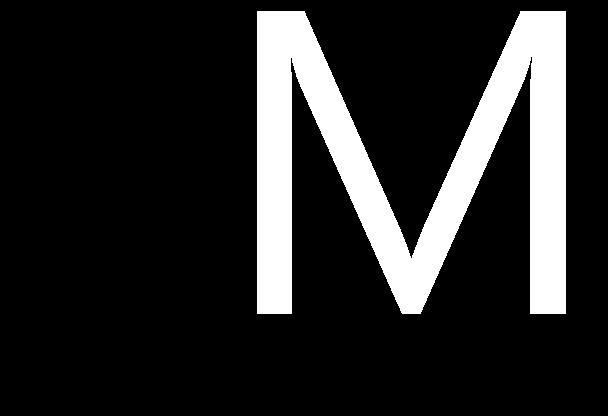
JUNE 2024
PUBLISHER: Ralph Scrivens ralph@ energymanagermagazine.co.uk
PRODUCTION: Sarah Daviner sarah@ energymanagermagazine.co.uk
ACCOUNTS: accounts@ energymanagermagazine.co.uk
PRINT: Mixam Print
ENERGY MANAGER MAGAZINE is published 10 times a year by Energy Manager.
www.energymanagermagazine.co.uk
42 Wymington Park, Rushden, Northants, NN10 9JP
Email: mail@energymanagermagazine.co.uk
REGISTRATION: Qualifying readers receive Energy Manager free of charge. The annual subscription rate is £80 in the UK, £95 for mainland Europe and £115 for the rest of the world.
Single copies £10.
Some manufacturers and suppliers have made a contribution toward the cost of reproducing some photographs in Energy Manager.
PAPER USED TO PRODUCE THIS MAGAZINE IS SOURCED FROM SUSTAINABLE FORESTS.
Please Note:
No part of this publication may be reproduced by any means without prior permission from the publishers. The publishers do not accept any responsibility for, or necessarily agree with, any views expressed in articles, letters or supplied advertisements. All contents © Energy Manager Magazine 2024 ISSN 2057-5912 (Print) ISSN 2057-5920 (Online)
INSIDE

ENERGY MANAGER MAGAZINE • JUNE 2024 3 4 News 9 Opinion 10 Monitoring & Metering 15 Decarbonisation 18 Energy Management 20 Energy Storage 24 Heating 28 HVAC 30 Heat Pumps 35 Training 36 Showcase 38 Water Management Effective operations and monitoring of distributed energy resources FRONT COVER STORY: See page 14

HI GROUP PARTNERS WITH MIDKENT COLLEGE TO BECOME BRITAIN’S GREENEST COLLEGE
HI Group has engineered an ambitious sustainability initiative in partnership with MidKent College, putting the college on track to become the greenest of its kind in Britain.
With the signing of contracts on 13 May 2024, the College is set to replace its fossil fuel based heating system at the Maidstone and Medway campuses as it embarks on an £11m green energy retrofit. True to MidKent’s strategic goal to spearhead an ambitious decarbonisation initiative for the further education (FE) sector, the investment marks a substantial step towards sustainability, enabling the college to transition its two locations entirely off gas for its energy needs by March 2025.
The groundbreaking move, thanks to Government funding under the Public Sector Decarbonisation Scheme, and principal contractor CBRE, echoes the growing environmental concerns of its 8000-strong student body and will serve to satisfy the demands of prospective students who, more and more, are seeking institutions that provide environmentally responsible education.
The Public Sector Decarbonisation Scheme is run by the Department for Energy Security and Net Zero and delivered by Salix Finance.
Identifying the most effective and
viable green energy solution for the college has been the result of two years’ worth of extensive analysis and meticulous planning by HI Group.
This has included environmental audits encompassing energy and water supply across a complex site of buildings cross the two campuses. The results have formed the foundation of a detailed emissions reduction strategy and a fivestep energy retrofit plan which entails:
1. Electrification of heating via installation of renewable electricity-powered heat pumps
2. On-site renewable power generation through extensive solar PV systems, including a rooftop solar system and a unique vertical solar façade featuring college branding
3. A solar car port will also be installed which will be the one of the largest arrays of its type in the UK
4. Optimisation of energy use with battery storage and smart controls for economic energy management
5. Installation of new domestic hot water systems
MidKent’s journey follows a successful blueprint created by the Nottinghamshirebased environmental consultancy for Gloucestershire College where a remarkable 70% reduction in GHG emissions

was achieved in the first 12 months following its adoption of green energy.
The college’s commitment is not just an institutional responsibility but a strategic move to influence future generations and the wider community towards sustainability, whilst also positioning the FE sector as a pioneering force to deliver low carbon operations well ahead of government targets.
With significant funding secured by HI Group via grants from the Department for Education and Salix Finance, initial preparations on site are already underway and a groundbreaking ceremony is scheduled for this June. Completion is anticipated by the end of February 2025.
To find out more about the project, please visit https://www.midkent.ac.uk/zero
Future of heat networks dependent on zoning and rebalancing levies
Heat network zoning and rebalancing the levies will be the deciding factors in whether the UK sees a successful deployment of heat networks. That was the verdict from the panel at the Association for Decentralised Energy’s (ADE) recent Heat Network Conference.
The event, hosted in partnership with Womble Bond Dickinson (WBD), saw experts from across the heat network sector come together to map out critical new approaches to public investment and local delivery with the general election just round the corner.
Speaking to a room full of industry experts, Melanie Onn, who is standing to be Labour MP for Great Grimsby & Cleethorpes, emphasised the support there is from Labour’s side to decarbonise domestic heating by 2030. Melanie went on to highlight the key role industry and local authorities play in implementing this transition, reiterating that an integrated approach must be taken in order to boost Britain’s energy confidence.
Throughout the afternoon, speakers from the Department for Energy Security and Net Zero, Greenpeace, the National Infrastructure Commission (NIC) and many more took to the stage to discuss new approaches to sector growth. Margaret Reid, Director of Policy at the NIC said: “One of the key takeaways from the conference was bringing home the point that heat networks can’t just be thought of solely as a means of decarbonise heating. Their potential role within the broader system – including providing flexibility, or utilising waste heat – will be important to consider as part of a more holistic, whole systems approach to the energy transition.”
Reflecting upon the array of speakers, the ADE’s Heat Network Policy Officer, Mike Tisdell, said: “Despite major strides in recognising the central role the sector will need to play in decarbonising heating, not just through zoning policy, but also in the maturation of the sector represented by incoming consumer regulation and technical standards,
continued challenges remain.
“The vision of city-scale heat networks operating as an additional utility will require clear and consistent commitment from government. Ensuring clean heat networks are not unfairly disadvantaged on costs remains a crucial issue, with the rebalancing of levies away from electricity still at the front of minds, as industry mobilises to roll-out low-carbon heat networks across the UK at scale.”
Andrew Hirst, Partner at WBD, said:
“The discussions on the day brought out lots of interesting insights – including the challenges and opportunities that could arise as well as the planning and policy needed – ideas that will impact the transition to and growth of the sector. Undoubtedly, heat networks present one of the best opportunities in terms of decarbonising the UK and it’s clear that the conversation is far from over.” https://www.theade.co.uk/
ENERGY MANAGER MAGAZINE • JUNE 2024 NEWS 4

Bradford College Wins UK’s Biggest Sustainability Competition in Further Education
Bradford College has triumphed in this year’s Planet Earth Games - the biggest sustainability competition for the UK further education sector.
With over 3,000 good deeds for the planet undertaken since January, Bradford College topped the national leader board of FE colleges. Staff and students racked up an incredible 9,045 points, more than 3,000 points clear of the second-place college.
Planet Earth Games aims to support climate action through sport and physical activity. Using an innovative model, institutions of all types battle it out to help save the planet. The Games run from January to April in partnership with the Association of Colleges.
By signing up for the initiative, student and staff competitors were encouraged to participate in various challenges of all different types to earn points for the wider College team. These include activities like tree planting, litter picking, and green commuting. Bradford College student-led activities included a climate march by the Students’ Union and a large-scale community cleanup by the ESOL (English for Speakers of
Other Languages) department.
Bradford College
Sustainability
Lead, Chelsie Naylor, said: “We are thrilled to win this year’s Planet Earth Games. Although we’re at the start of our sustainability journey, this competition has started the conversation about climate change, sparking an interest in small, local action.

After securing nearly £32 million in funding over the last two years, the College now aims to make substantial carbon savings from retrofitting estates, energyefficiency upgrades, and new buildings such as the Future Technologies Centre opening 2025/2026. Work also includes a successful £2.6m Public Sector Decarbonisation Scheme grant, run by the Department for Energy Security and Net Zero and delivered by Salix.
“By taking part in challenges, staff and students engaged with environmental issues in a positive and tangible way; this often feels more empowering than signing a petition or sharing something on social media – it’s real action.
“Winning Planet Earth Games has really put Bradford College on the map and at the heart of conversations with other colleges nationally. We are committed to tackling climate change to support the 17 UN Sustainable Development Goals and have an ambitious roadmap in place to reach a net-zero target by 2050.”
Monitor and control energy consumption throughout student accommodation
In each room Irus control units monitor temperature, humidity, light, sound pressure and CO2*. Data is sent to the Irus Portal.
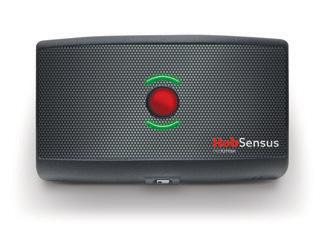

PipeSense monitors water flow and registers water temperature at point of use. It also detects and reports malfunctioning toilet cisterns.
Bradford College is now working on embedding sustainability and green skills across all curriculum areas. Delivery of Carbon Literacy training has already begun with more sessions planned for October and beyond. Electric vehicle (EV) training, sustainable fashion collections, environmental staff development days, water refill stations, and electric vehicle charging points are just some of the successful green initiatives already in place at Bradford College. www.bradfordcollege.ac.uk/ capitalprojects/ https://planetearthgames.org/

The Irus Portal collates the data which is then viewed on any internet enabled device. From here, all settings and profiles are adjusted, and consumption is monitored. Alerts are generated for unusual conditions such as leaks, wastage, hob alarm triggers, supplementary heaters, humidity



ENERGY MANAGER MAGAZINE • JUNE 2024 NEWS 5
prefectcontrols.com
* CO2 monitoring requires an additional module. PREFECT Irus is a registered UK trade mark owned by Prefect Controls Limited. Trade mark number UK00003943738
HobSensus
monitors
cooking surfaces. It cuts power to the hob when dangerous temperatures are approached.
SMART Tank is the only pre-plumbed, pre-wired hot water cylinder with on-board controls to monitor and measure temperature, volume, leaks and wastage.

EQUANS PARTNERS WITH URBANCHAIN TO DELIVER VIRTUAL POWER PLANT IN DUDLEY
Equans, has announced a major boost for its pioneering project in Brockmoor, Dudley, where the company is set to deliver Europe’s first net zero carbon neighbourhood - tackling climate change and fuel poverty in tandem.
Equans will partner with UrbanChain, a peer-to-peer (P2P) energy exchange company and Dudley Metropolitan Borough Council (DMBC) to progress with developing and deploying one of the UK’s first Virtual Power Plant’s (VPP) in council-owned building stock to create a pooled energy solution in Brockmoor.
The initiative will integrate solar panels and battery storage across a mix of residential and commercial properties to form a cohesive energy generation and demand management system – enabling tenants to buy cheaper energy through the VPP than purchasing directly from the grid.
The VPP solution will empower communities and asset owners to share 100% clean energy, by integrating blockchain and Artificial Intelligence (AI) into a P2P energy exchange. It will flexibly distribute energy and savings to multiple beneficiaries with no upfront capital costs to the local authority or tenant. The revolutionary method allows Equans to create revenue streams to unlock private finance or simply supplement the revenue stream of its partners - local authorities for reinvestment in other projects or services.
Equans previously secured £1.65 million in funding from the West Midlands Combined Authority (WMCA), for the wider net zero neighbourhood, which will act as a pilot to seek a scalable solution

for decarbonising neighbourhoods across all seven local authority areas in the West Midlands, while supporting efforts to combat fuel poverty.
Colin Macpherson, Divisional CEO for Equans UK & Ireland, commented: “We are pleased to be working with UrbanChain, who share our vision of making green energy affordable and putting communities first. Together, we hope to unlock capital for the council so it can continue its bold journey of decarbonising, while improving lives.
“This is a truly innovative and groundbreaking project. As well as the promise of reducing carbon emissions, it has the potential of spearheading a step change in energy supply; but more
importantly, it has the capability of making real inroads to combat fuel poverty.”
Dr. Somayeh Taheri, CEO of UrbanChain said: “This collaboration represents a significant milestone in our mission to address fuel poverty and provide a return on investment for local authorities and communities committed to making a lasting impact. We are excited to showcase how our innovative technology can play a crucial role in transforming energy management and sustainability at the community level.”
Work on the net zero carbon neighbourhood is already underway and will continue over the next two years.
www.equans.co.uk
www.urbanchain.co.uk
A school water audit report uncovers a 50 per cent saving on their water bills
Aschool in Berkshire commissioned a school water audit as an integral part of their cost reduction and sustainability drive, in order to find savings on their increasing water bills. In the knowledge that their water charges are increasing year on year.
As their water wholesaler Thames Water are raising the wholesale water charges by 7.8 percent on water and 15.2 percent on wastewater from 01/04/24.
If you then add on the default water retail margin at say 10 percent then the reality is the school’s overall charges will increase substantially, gone are the days
of cheap water and wastewater services.
The water audit experts H2O Building Services were chosen as preferred water consultants to audit the water bills and report back with the initial desktop findings.
The water audit resulted in a recommendation to carry out an actual site survey as the water consumption was high considering the levels of staff, facilities and pupils on site.
The average annual water and wastewater consumption was 6,106m3 and the water use per head which included staff and pupils was 33 cubic meters which is far in excess of the
national average and expectations.
The site survey revealed a potential saving of £8,000 per year.
The high water use was due to faulty push down taps constantly flowing and urinals constantly filling and flushing uncontrolled.
Taking into consideration the site survey report and the supply of the water saving devices to reduce the water consumption the payback on investment is 3 months!
For a school water audit call 0845 658 0948 or email info@h2obuildingservices.co.uk
ENERGY MANAGER MAGAZINE • JUNE 2024 NEWS 6

University of East London reduces carbon emissions in first stage of net zero strategy
The University of East London (UEL) has reduced its carbon emissions by 10 per cent from its 2020/21 baseline to 2022/23 in its new net zero strategy, putting the organisation on track to achieve its 2030 net-zero target.
UEL partnered with technology company Siemens to develop the strategy, which included a roadmap to reduce carbon emissions across the university’s campuses in the London Docklands and Stratford, which are home to 25,000 students.
The first major step towards the reduction of energy consumption on campus was through the installation of LED lighting in all buildings and upgrades to all building management system controllers.
As part of the second phase, Siemens is installing technologies across the University’s campuses which will help it to decarbonise its energy consumption. This includes the installation of approximately 2MW of solar photovoltaics (PV), which is estimated to generate 1.2 GWh of zero carbon electricity a year, and the installation of 27 electric charging points at the University’s Docklands Campus, which will go live in the next month.
UEL estimates that 90 per cent of this zero carbon energy will be consumed across the University’s campuses, with the remainder exported to the National Grid.
Siemens will also support UEL in creating a ‘Living Lab’ to embed sustainability across the University’s course curriculums and provide real-time data allowing students to develop the skills they need to succeed in a green economy.
Professor Amanda Broderick, Vice Chancellor and President, University of East London, said:

“Our long-term partnership with Siemens is central to our commitment to becoming a national decarbonisation leader, and providing a global blueprint for urban sustainability. We have already delivered significant carbon reduction savings and reduced both our emissions and energy consumption more than any other modern university in London, thanks to state-ofthe-art energy generation technology.
“And, importantly, our ‘Living Lab’ will provide our students, researchers and
local businesses an inclusive place to test, research and commercialise green technology in a real-world environment, with access to the latest developments in smart technology to empower our students to become sustainability leaders of the future.”
Siemens will be showcasing how technology can accelerate organisations’ decarbonisation journeys at its free-to-attend Transform event on 17th and 18th of July.
To register visit: https://siemens.co.uk/transform

ENERGY MANAGER MAGAZINE • JUNE 2024 NEWS 7 EcoFlow PowerOcean DC-Fit and Single-Phase 5 Little Park Farm Road, Segensworth West, Fareham, Hampshire PO15 5SJ, United Kingdom | paul.smith@ecobat.com | +44 (0)7808 760420 VISIT US AT ECOBATBATTERY.COM Scan to view our new catalogue Easy and cost-effective battery storage solutions for residential PV systems. The PowerOcean DC-Fit enables direct connection of the battery to the solar system on the PV side, eliminating the need for an additional storage inverter. The PowerOcean Single-Phase combines battery storage, hybrid inverter and 2 MPPT Solar Controllers in a stylish modular package. PowerOcean Single-Phase Now Available Contact your local branch for more details Energy_Manager_MagazineAD_April24.indd 1 17/05/2024 09:11:44

£530million cash boost for fire stations, schools and hospitals to help tackle climate change
More than £530million of funding will be handed to schools, hospitals, fire stations, universities and other public buildings across the country to help tackle climate change.
Organisations are celebrating receiving the funds under Phase 3c of Public Sector Decarbonisation Scheme and can now start implementing energy efficiency works in a bid to meet ambitious net zero targets.
The scheme, delivered by Salix and run by the Department for Energy Security and Net Zero, is designed to slash energy bills and reduce carbon emissions and reducing the reliance on fossil fuels.
Salix Finance Chief Executive Emma Clancy said: “Climate crisis is one of the greatest challenges of our time. It requires all of us, including governments and business to make change and reduce our carbon footprint.
“The Public Sector Decarbonisation Scheme enables the public sector to tap into a fund which can transform our public buildings. These are the sites we use every day; our schools, universities, leisure centres and others will become more energy efficient as well as being comfortable places to use thanks to this funding.”
For a list of successful grant recipients visit: https://www.gov.uk/government/ publications/public-sectordecarbonisation-scheme-phase-3
Minister for Energy Efficiency and Green Finance Lord Callanan announced the allocation of £530,604,960million today under the Public Sector Decarbonisation Scheme. It will be spread across classrooms, hospitals, leisure centres, fire stations and leisure centres among other buildings to drive down their emissions by installing low-carbon heating systems.
A total of 189 organisations have been awarded grants for 222 heat decarbonisation and energy efficiency projects. Additional funding will be allocated through Phase 3c over the coming weeks.
Royal United Hospitals Bath (RUH) NHS Foundation Trust has received £21.6m under the scheme. The
multimillion-pound cash boost will fund improvements including more environmentally friendly lighting, insulation, and heating and cooling controls. Although most of the funds will be used to de-steam much of the RUH’s 52-acre site, replacing the hospital’s ageing heating systems with more energy-efficient options like heat pumps.
RUH Chief Executive Cara CharlesBarks said: “We are beginning to make great strides to reduce our emissions, through initiatives such as decommissioning our entire nitrous oxide manifold and a sustainable travel plan. However, we knew we needed to make significant investments in our estate to fulfil our commitment of reaching net zero for scope one and two emissions by 2030, in line with BaNES Council’s goals.
“This grant is therefore invaluable. It will enable us to make these essential changes in the coming years and will have a positive impact on the environment and the experience of being in hospital. We know that getting this right will be better for the health and wellbeing of the people we care for, the people we work with and the people in our community.”
Another grant recipient is Royal Berkshire Fire and Rescue Service which has won £927,845 from fund.
The service intends to invest £1.77 million in sustainability improvements over the next two years across five of its least energy efficient buildings. And features will include new LED lighting, solar panels, air-source heat pump systems and improved building insulation.
Mark Arkwell, Deputy Chief Fire Officer, said: “As a fire service, we are committed to ensuring we are doing all we can to reduce our impact on the environment.
“This funding is a fantastic boost to help deliver our ambition of rapidly improving our estate for the benefit of staff, public and the planet. I believe it’s right for us to play a leading role in responding to the climate emergency and with 65% of our carbon coming from the estate we

are sensible to focus on this area first.”
Nottingham College has been awarded more than £2.6million, in a successful bid to fund decarbonisation and energy efficiency initiatives across its estate over the next two years.
It will be used to pay for upgrades to campuses heating, ventilation systems and lighting, as well as to replace boilers, improve insulation and introduce other new measures to reduce water usage and reliance on other consumables.
Janet Smith, chief executive and principal of Nottingham College said: “We are really pleased to have been successful in our bid for this funding. As a college with a rich heritage and wide range of facilities across the city, this funding will help us on our journey to be carbon net zero by 2030.
“The College’s Zero campaign has seen us make great strides over the past 12 months with a 30% reduction in our carbon footprint so far – but we know there is more to do.”
Other successful projects include; Loughborough University which has been awarded more than £2 million to decarbonise their Olympic size swimming pool by replacing old gas-fired boilers with heat pumps. Surrey County Council has been awarded over £5 million to cut emissions across nineteen sites including six libraries, four nursing homes, two community centres, five schools, Guildford Fire Station, and the council’s headquarters in Reigate.
More than 1,000 buildings have already received upgrades through the Public Sector Decarbonisation Scheme which was first launched in 2020. Phase 4 of the scheme will be launched in the summer giving further opportunities for public sector organisations to win funding for energy saving measures. www.salixfinance.co.uk
ENERGY MANAGER MAGAZINE • JUNE 2024 NEWS 8
Emma Clancy Salix CEO

LOCAL AREA ENERGY PLANNING – WHAT DOES GOOD LOOK LIKE?
A COORDINATED APPROACH
I coined the phrase Local Area Energy Planning in 2018 and I am pleased it is gaining traction across the UK as places look to plan and deliver their Net Zero ambitions. At the end of 2021 we had 15 local areas in the UK either with a LAEP in place or were developing one. As of May 2024, there are over 100 areas who have either completed or are undertaking a LAEP – accounting for around 25% of local authorities in the UK. And that is without LAEP being mandated or funded in a co-ordinated way centrally (except for Welsh Government who have commissioned LAEPs for all 22 of their local authorities).
The Catapult came up with the concept of LAEP because we could see that unlike other practices, like transport planning, decarbonisation activity was uncoordinated, with different organisations doing their own thing.
To achieve Net Zero and to do this costeffectively it is clear that we need a ‘whole energy system’ approach. Also key is that plans should be locally led, rather than being imposed on local places through a national, top-down approach. Over the last decade we’ve delivered 22 LAEPs and it is great to see others have entered the market to deliver and help support continued innovation in this space. We created guidance as a framework for local areas to procure someone to help them deliver a local LAEP – but consistency and robustness remain a challenge.
THE ’PERFECT PLAN’
At its core, a good LAEP gives a local area a highly granular plan that shows what needs to be done, where it can be done, and when it can be done. A well designed LAEP will include the following:
• The chosen pathway with sequenced interventions that set out the area’s proposed route to Net Zero.
• A ‘plan on a page’ that provides an at-aglance impression of the scale of least regret interventions across the different geographical zones of the local area. Visual focus zones for all the prioritised activity associated with getting to Net Zero.
Outline priority projects, providing users of the LAEP with priority. Interventions to take forward.
• Breakdown of investment to decarbonise the local area.
• Highlighted next steps including key immediate/near-term activities
COMMENT
by Richard Leach, Senior
Local Energy Transition Advisor at Energy Systems Catapult.
and actions needed to progress the LAEP.
Corresponding data sets that can be used for a future LAEP update or by organisations to support project/implementation activity.
A SEVEN-STAGE PROCESS
A good LAEP will follow the guidelines and the seven stages, there are lots of tools and approaches out there which use the term LAEP but when you look into it quite often all it really is some data visualisation of the current energy system in a location. Whilst this is useful to identify quicks wins, it doesn’t model future pathways and take a whole energy systems approach, helping a local area deliver the most cost-effective route to Net Zero.


and less certain (longer term activity)
Prepare – In this stage, key for a good LAEP is to ensure that mobilisation includes having an understanding of how the LAEP is going to be used afterwards by local government. This may include considering if it is better placed to try and develop a LAEP regionally with partners or individually.
Engage – A good outcome is that all major stakeholders who are going to play a role in delivering net zero in a place support/are bought into the LAEP
Map – Representing the local area and its energy system with a very high level of spatial granularity (ideally at building level) is important as this provides the building block to identifying the what, where and how many in the LAEP
Model – technical robustness of the modelling/analysis is so important, a good outcome is being confident with the proposed solutions when compared to other options from a whole energy system perspective – you need to be able to explain why options have been selected
Choose – Looking across options and scenarios for trends to identify where energy system decisions are low regret e.g. a heat network is always a good option for a place when compared to other options Identify – Breaking down all of the activity in a LAEP in a sequence, prioritising what to do in the short term (where low regret / less risk) versus key decision points
The plan – Spatially visualising, to a high degree of detail, the what, where, how many, and how much (e.g. how many EV charge points in this post code area and how £) – this is what organisations use to take forward activity, not lots of technical writing. Also providing the outputs as data to be used and kept up to date.
UNLOCKING FUNDING
By following the above and by using data right down to the street level and the lower super output areas you get the level of granularity which can help local decision makers know for example where the best homes are for retrofit or the best homes for solar. This enables areas to create areas of focus and understand opportunities to deploy at scale and therefore support investment.
LAEPs are helping areas unlock funding opportunities both from the public and private sectors, we are seeing this in both York and North Yorkshire and Greater Manchester.
As we recently highlighted in our Time is Now Report - which looked at the barriers to LAEPs from capacity, capability, and data. Data is key to the success of a LAEP and a good LAEP needs good data to inform decision making and the choosing of the right pathway.
If we want every local area in the UK to progress its own Net Zero journey, I passionately believe we need consistency and an agreed framework. I remain committed to championing LAEP as the approach that gives our towns and communities the power and evidence to get to their destination in the best possible way. https://es.catapult.org.uk/
9
ENERGY MANAGER MAGAZINE • JUNE 2024
OPINION

WHY MARKET-WIDE HALF HOURLY SETTLEMENT IS AN ENERGY OPPORTUNITY NOT AN ADMINISTRATIVE BURDEN
Ben Whitelam, Director of Commercial at npower Business Solutions (nBS)
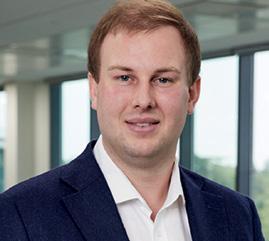
Over the past few years, organisations across both the public and private sectors have experienced the impact of a highly volatile energy market.
As a result, the government has published several policies and strategies that have outlined its plans to strengthen the UK’s energy security and pave the way to net zero.
The overwhelming conclusion is that, for the UK to successfully decarbonise, and for organisations to benefit from a responsive, secure and low-carbon energy system, we need to radically reshape the way in which our energy sector operates.
This is because as we shift to more intermittent renewable power sources and decrease 24/7 fossil fuel generation, we’ll need to manage all aspects of electricity more efficiently.
So, in addition to decarbonising generation, we need to change the way we supply, trade, consume and interact with electricity – so that it becomes far more targeted, responsive and flexible.
A key enabler of this energy transformation will be Market-wide Half Hourly Settlement (MHHS) – a revolutionary project instigated by the governmentappointed energy market regulator Ofgem. Set to be one the biggest transformations to the British electricity market since privatisation, at its heart is unlocking more granular and timely data to understand how and when all consumers use electricity.
So, what does this mean for public and private sector organisations?
PREPARING FOR MHHS
The MHHS means that all organisations will be settled half-hourly, rather than relying on estimates and potentially inaccurate meter readings associated with old-style technology.
The industry timeline for delivering MHHS starts in April 2025 and runs through 2026. The changes an organisation will see will depend on the type of meter you have installed. For example, if you already have an automated meter reading (AMR),

Smart or Half-Hourly meter, it is unlikely that any change in meter will be required.
That said, while it won’t be a mandated requirement under MHHS for energy meters to be upgraded to AMR or Smart meters, there are multiple benefits for doing so. They allow consumption data to be extracted electronically without having to rely on manual meter reads, providing you with more accurate data so you can better manage your energy use. This can help to identify potential efficiencies and also means that energy invoices are based on actual consumption rather than estimated readings.
In addition, MHHS will mean an increase in the data available, so it is also important that organisations already have an understanding of their energy consumption.
There are intelligent tools and easy-touse energy management platforms available that allow energy managers to visualise, track and analyse their consumption. They can also enable users to customise features and reporting, set alarms and compare sites to help maximise efficiencies and reduce costs and carbon emissions.
Using these platforms, such as our Intelligent Analytics tool, means your data can then be transformed into actionable insights that can be used across your organisation.
GREATER ACCURACY BRINGS GREATER OPPORTUNITY
One of the primary benefits of the MHHS reform is the level of insight it will bring. Once implemented, MHHS will provide an incredible level of visibility into how much electricity is being consumed for every 30-minute period throughout the day and night – that’s 48 data points for every UK meter in every 24-hour period.
Having access to all this insight will help to support an energy system that can forecast, generate and distribute electricity far more accurately and efficiently than ever before.
MHHS will also support the more flexible use of electricity, which we’re already starting to see with ‘time of use’ tariffs emerging to incentivise the use of energy at times of abundant supply and away from peak-demand periods.
Consumers will benefit from more accurate rather than estimated bills, access to new products, more innovation, new technologies and flexibility services from suppliers, and ultimately a more cost-efficient energy system.
A FLEXIBLE AND RESPONSIVE ENERGY FUTURE
The energy industry is working together right now on the industry architecture that will enable so much more data to be processed.
The responsibilities of meter service providers are also changing, with new roles emerging for the gathering, analysis and delivery of meter data.
For organisations in the public and private sectors, it will pay to get ahead of the game by understanding your energy data, and by working with your meter operator, data collection and data aggregator service provider to ensure you are prepared for this important change. While bringing a major shift in how the energy sector works, MHHS will also bring significant opportunities, particularly in terms of improved flexibility, the drive to net zero and – importantly – cost savings.
For more information, visit nBS’s dedicated MHHS information page. https:// npowerbusinesssolutions.com/mhhs
10 MONITORING & METERING ENERGY MANAGER MAGAZINE • JUNE 2024

PEL 103 Power & Energy Logger





Bridge the energy gap between today and tomorrow. Increase energy e iciency and reduce your costs.
Our future energy needs are changing and businesses need to improve their energy e iciency. You can reduce required power generation, save money and increase productivity.
Gain a competitive advantage now with the PEL 103.


The key to a reduced carbon footprint & improved energy e iciency.
Measure and monitor power usage. Identify ine iciencies and out of hours use. Discover power factor, phase balance and harmonic issues.

Contact us to learn more
CHAUVIN ARNOUX UK Ltd | 125 YEARS IN BUSINESS | 30 YEARS IN THE UK 1 Flagship Square | Shaw Cross Business Park | Dewsbury WF12 7TH | T: 01924 460494 | E: info@chauvin-arnoux.co.uk

Putting the App into Happy Housing
The smart way to meter, measure and manage energy resources for Councils and residents alike.
What’s the simplest way for you to offer residents a simple but secure opportunity to pay for their gas or electric? The smartest solution undoubtedly comes from Energy Controls; making it easy for customers to pay for their energy while they’re relaxing at home
And it couldn’t be more straightforward or more rewarding.
Pay-As-You-Go
Whether you’re looking to streamline your energy overheads with automated meter readings or get paid upfront using the latest prepayment system, Energy Controls has the products and expertise to help. They have a fully hosted, web-based software solution linked to market-leading Payment Platform that enables property managers to offer tenants a simple 'Pay-As-You-Go' solution for making energy payments
Energy Controls’ award-winning SMART meters are ideal for all types of sub-metering applications, ranging from blocks of flats to travellers sites and social Housing

Business Booster
Energy Controls have been trading for 33 years and are now the leading Supplier of prepayment metering systems to the Landlord sector.
They have invested heavily in an IT infrastructure that delivers a secure, reliable and robust online payment solution which in turn gives the Council and residents alike immediate access to their energy usage data around the clock.
Energy top-up payments can be made online anytime from anywhere using the FREE App
“The prepayment opportunity that our SMART Meters offer our customers provides an instant boost to cash flow” Chris Smith, Managing Director

• Get paid upfront for your energy supplies
• Tenants can Top-up online or via our FREE app
• C Cashless money transfers directly into your bank
• Emergency Credit feature
• R Remote disconnect/reconnect of power supplies

MONITORING & METERING

Accurate Data
The Energy Controls’ SMART meter portal enables Property Managers and tenants to monitor their energy usage trends, on the go from anywhere and at anytime.
Our online payment platform integrates seamlessly with PayPoint to allow users to top up their meters securely, online or using our FREE App A variety of energy usage and financial reports are generated automatically and are sent directly to customers on a regular basis.

Happy Customers
But you don’t have to take Chris’s word for it. Simply read what the Gypsy and Traveller Team Manager for West Sussex County Council had to say:
“Working with Energy Controls, we have introduced a new cashless PayPoint system for the SMART meters at our Traveller Sites. This system has been a huge improvement for the Council because not only does this mean our staff no longer have to handle cash, the PayPoint service gives our residents greater flexibility and independence. I would not hesitate in recommending Energy Controls and their products and services.”
The Manager at Southend YMCA went even further:
"Energy Controls supply 21st century thinking and a great web based service, with lots of useful functions, allowing you to see how much energy has been consumed on an individual basis. We highly recommend Energy Controls to any business. The whole experience of having the latest metering system installed was too good to be true and very straightforward.”
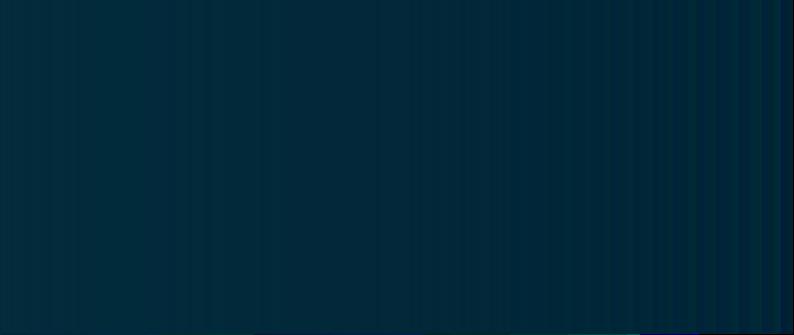
Fit for FREE Energy Controls is happy and well equipped to offer a complete service from free survey to installation, together with full training and after-sales support. 0 3 45 2304535 0 78 79 400 150 s a les @ en e rgy c o nt rols. co. u k www.econtrols.co.uk MONITORING & METERING 13 ENERGY MANAGER MAGAZINE • JUNE 2024

EFFECTIVE OPERATIONS AND MONITORING OF DISTRIBUTED ENERGY RESOURCES

The modern energy mix is more diverse than ever. Accelerated growth and innovation have resulted in a new generation of energy technologies to harness power from natural resources at various locations and scales, from individual microgeneration systems through to gigawatt-scale installations. DERs allow energy to be generated from these natural resources closer to where it will be used and create a more diverse range of generation sources, but this greater variability brings unique challenges for monitoring and control.
Large-scale DER installations are undoubtedly a positive addition to the energy network, but their integration and management is more complex than that of individual, smaller scale DERs. A rooftop solar panel, for example, is typically relatively simple to both install and run — they usually do not require complicated control mechanisms to function and to connect to the grid, and all components are often from a single vendor. When scaling up to large-scale DERs, operations immediately become less straightforward.
CHALLENGES OF SCALE
A utility-scale DER operation comprises vast amounts of equipment in addition to the energy capture assets. A typical installation will require large inverters, combiner boxes, trackers, weather stations or power switching equipment. As an example, a solar plant with a 500 MW (megawatt) capacity may use hundreds of inverters and thousands of trackers in its day-to-day operation. This equipment may come from different manufacturers and vendors with varying IT (information technology) and OT (operational technology) standards and requirements. All these assets need to be integrated to provide a holistic overview of the plant’s state and performance for
In a diverse energy landscape, monitoring and control of decentralized energy resources can be challenging. Distributed Energy Resources (DERs) offer a way to harness a wider range of energy resources and boost grid resilience, but they require advanced control and monitoring systems. Here, Stefan Hufnagl, Industry Expert for Energy at automation software supplier COPA-DATA, explores how digital technologies can offer a solution.
effective operation and monitoring. What’s more, these utility-scale DERs are often connected directly to the grid. This connection requires the operation to function correctly and consistently to ensure accurate grid frequency and voltage. This relies on automated plant controllers and the transmission of telemetry data to the distribution network to maintain overall grid balance and stability.
DIGITAL SOLUTIONS
For efficient and effective operation of DERs, digital solutions are an invaluable tool. Renewable energy projects must be safe and reliable in the context of specific electrical parameters. The system must operate in line with defined rules in order maintain internal integrity and to help maintain the grid stability. The monitoring and flexible management of diverse generation assets can only be achieved with digital technology. Digital technology on the OT side enables the monitoring and flexible orchestration of generation assets. Immediate, automatic responses are crucial for certain situations, including identifying and isolating malfunctions, instructing service teams and ensuring rapid problem resolution. Effective control of extensive systems like solar, wind, or battery farms rely on digital communication, advanced software visualization and intelligent algorithms for protection and automation. Optimizing profitability within specified constraints is paramount. Detecting and correcting inefficiencies, adjusting to environmental conditions and coordinating system maintenance with production schedules are essential tasks. Additionally, participating in energy trading pools demands reliable digital information regarding production schedules
and generative capacities. Successful operation within these parameters requires a holistic approach, leveraging digital technologies and intelligent algorithms for both stability and economic efficiency.
COPA-DATA’s zenon software platform offers connectivity to many of the important components in large scale DER installations, including substation control and communication with regional and national control centres. Based on this, zenon can manage high volumes of data, and provide advanced visualization, control and analytics to optimally manage the facility. The system can be completely tailored to the needs of the respective users.
The integrated platform offers a variety of functions for robust networking, real-time data processing and flexible visualization both on site and remotely. It also has features ideal for supporting DER operation, for example, specialist cloud services such as weather forecasting or operational optimization for dedicated generation processes, based on machine learning and AI.
Utility-scale DERs represent an emission-free solution to generate energy and to diversify the overall energy mix, but they pose a challenge for both operators and the distribution grid.
Open, independent and future-proof solutions are essential in achieving safe, effective and economic operation of largescale DERs. zenon offers an unparalleled mix of industry-proven functionality and IT and IoT based technologies, in order to achieve the perfect balance between robust system operation and innovative DER operation and monitoring.
Find out more about how using zenon can create a smarter, more connected DER operation: https://www.copadata.com/
14 MONITORING & METERING ENERGY MANAGER MAGAZINE • JUNE 2024

RINNAI: UK TO CLEAR A PATHWAY TO MORE ELECTRIFICATION?
Chris Goggin reviews the UK’s approach to extending and enhancing electrical grid connections to recently constructed renewable energy projects. He looks at how focus could be applied to the potential impact on UK customer options.
Every major country is trying to decarbonise all industrial and commercial operations, knowing that current fossil fuel usage is environmentally unsustainable. Therefore, each notable international economy is currently drafting future energy policy objectives that complement respective domestic energy mixes.
It is a widely believed amongst professionals inside the industry that a range of energies will need to be utilised in realising the target of reducing national carbon loads. As part of the UK plan to decarbonise domestic, commercial and industrial activities widespread electrification will become the major contributor towards reducing national and global carbon outputs.
Widespread electrification is a main objective by UK policy makers who aim to impose the cheapest electricity costs on UK households in the European region by 2035. Over the next 10 years electricity demand is predicted to double, by 2050 UK electrical demand and usage will be twice the amount that is consumed today.
To satisfy future electrical supply and demand the UK National Grid has announced plans for the “Great Grid Upgrade.” The national grid requires
adapting due to a transition away from fossil fuels through electrification. The current UK grid was designed to transport coal fired energy generated from geographically positioned power stations.
Substantial amounts of energy consumed across the UK is now produced from areas that are situated away from the power stations. Offshore wind and solar energy is generated away from UK land, in rural and seaward locations. To cargo renewable energy across the UK means the construction of new electrical grid connections must be created to ensure easy distribution routes.
The total cost of the upgrade is thought to be around £16 billion (Fund Calibre, Yardley, 2024) and will include grid connections to offshore wind and rural solar installations that allows for the easy transfer of renewable power to all corners of Britain.
Further electrical grid connections and upgrade projects are being pursued that will also aid in the access of renewable energy to the UK electrical grid resulting in lower customer costs. The UK and Denmark have collaborated in constructing a link that stretches for 475 miles joining Lincolnshire and southern Jutland.

The Viking Link required £1.7 billion of investment and is capable of powering 2.5 million UK households. National Grid estimate that the new connection will result in £500 million of savings for UK customers in its first 10 years by enabling a clear path of trade that compliments seasonal demand

and price between the two countries. (all info available at National Grid website).
The UK and Netherlands governments have also announced plans to construct a submarine interconnection that will allow both countries to transfer and trade clean offshore wind generated electricity. The Lion Link will produce 1.8GW of energy –enough to power 2.5 million homes and is due to be operational around 2030. (Info available at National grid website)
Scottish Power will also upgrade their transmission network over the next 10 years costing £5.4 billion. These upgrades will contribute 80-85GW of clean renewable electricity to the British grid. Significant work is being completed to adapting and connecting the UK transmission network to clean lowcost electricity. Domestic upgrades and submarine interconnections linking the UK with two additional countries should theoretically provide cost effective supplies of green power to UK businesses and homes.
Contractors, specifiers, system designers and installers should target manufacturers of decarbonising heating and hot water systems that have aligned their product options within future and current energy policy.
Rinnai will continue to provide UK customers with factual information that influences customer purchasing options with the aim of improving UK customer decision making in domestic and commercial decarbonising heating and hot water systems. Rinnai continue to monitor all domestic and global news related to all energy matters.
To take advantage of Rinnai design services and find optimum solution for your next project use our smart carbon calculation services today https:// www.rinnai-uk.co.uk/contact-us/ carbon-cost-comparison-form
15 ENERGY MANAGER MAGAZINE • JUNE 2024 DECARBONISATION

GRID CONNECTIONS CRISIS: HOW CAN UK BUSINESSES
OVERCOME GRID CONSTRAINTS ON THE PATH TO DECARBONISATION?
Britain’s energy transition has become fraught with wellpublicised delays in obtaining crucial grid connections, leading to stalled investments and imperilling emissions reduction targets. Amidst this challenge, a range of strategic solutions have emerged as vital lifelines to help organisations navigate grid constraints and propel decarbonisation efforts forward.
Britain’s energy transition has become fraught with wellpublicised delays in obtaining crucial grid connections, leading to stalled investments and imperilling emissions reduction targets. Amidst this challenge, a range of strategic solutions have emerged as vital lifelines to help organisations navigate grid constraints and propel decarbonisation efforts forward.
As the urgency to combat climate change intensifies, businesses across the United Kingdom are increasingly looking towards electrification as a key strategy to reduce greenhouse gas emissions. However, a significant obstacle stands in their path: grid constraints.
The challenge of grid constraints not only hampers the efforts of businesses to transition to cleaner energy sources but also poses risks of delayed investments and lost opportunities.
WHAT ARE GRID CONSTRAINTS?
Grid constraints arise when there is insufficient capacity within the electricity grid to accommodate increasing power
Daniel Moore, Head of Utility Services – SMS Plc
demand and/or integration of new renewable energy sources. This bottleneck in the grid infrastructure poses a formidable challenge for businesses embarking on decarbonisation and electrification initiatives.
For many large commercial or industrial energy users, it is an unfortunate reality that transitioning to cleaner energy sources requires (often costly) new or upgraded grid connections from their site(s).
Electrification of processes previously reliant on fossil fuels (such as adoption of efficient heat pumps in place of gas-fired heating or installing electric vehicle infrastructure to facilitate low-carbon transport) as well as integrating onsite electricity generation like solar PV, typically necessitates establishing a larger grid import / export capacity to and from the site.
However, with the huge increase in demand for new or upgraded grid connections from UK businesses looking to kickstart their electrification journey in recent years, there now exists a huge backlog of connections requests. Currently, businesses face delays ranging from 2 to 12 years for grid connections depending on how much capacity they require, with some reported to be waiting well into the 2030’s.
HOW DO GRID CONNECTION DELAYS AFFECT BUSINESS DECARBONISATION PLANS?
The impact of grid constraints on decarbonisation plans is profound. These delays not only escalate costs but also jeopardise critical investments and emission reduction targets. The implications extend beyond individual businesses, affecting downstream sectors in the supply chain and impeding the broader transition to a low-carbon economy.
Moreover, businesses encountering grid limitations are forced to explore alternative, often suboptimal, decarbonisation routes. This can often

compromise longterm emission reduction efforts and undermine the economic viability of renewable energy projects if businesses are not advised sensibly and strategically by genuine experts on their best possible alternative options.
WHAT IS GOVERNMENT DOING TO ADDRESS GRID CONSTRAINTS?
Following mounting pressure from industry, media, and the public, in November 2023 the UK Government released its Connections Action Plan, which outlines reforms to the process of grid connections including raising entry requirements, removing stalled projects, better utilising existing network capacity, improving data and processes, and developing longer-term connection process models. The goal is to significantly reduce connection timescales, ensuring viable projects can connect faster to support the transition to a net-zero power system.
The plan involves collaboration between government, regulatory bodies, energy companies, and customers to ensure timely implementation and accountability. Benefits are expected for all types of connection customers, from large-scale renewable projects to individual consumers installing home appliances like heat pumps.
In April 2024, Ofgem also endorsed the National Grid Electricity System Operator’s (ESO) own ambitious proposals to revamp the grid connections process, which aims to prioritise viable projects and potentially halve the connections queue. Whilst the regulator acknowledged the proposal’s potential to significantly contribute to the overall vision of the Connections Action Plan (CAP), it highlighted the need for continued progress on other CAP actions. Delivering this action plan and its proposed benefits is itself expected to take a number of years to implement
16 DECARBONISATION ENERGY MANAGER MAGAZINE • JUNE 2024

fully. This is time that many businesses wishing to decarbonise can ill afford to lose if they are to make good on their sustainability and net zero targets, which in many cases have been publicly declared.
HOW ENERGY INFRASTRUCTURE EXPERTS CAN HELP BUSINESSES MITIGATE THE RISKS OF GRID CONSTRAINTS
Amidst the challenges posed by grid constraints, strategic partnerships with energy infrastructure experts and carbon reduction partners have emerged as indispensable assets for businesses navigating the transition to cleaner energy sources. These partners, equipped with expertise in grid infrastructure and decarbonisation strategies, play a pivotal role in guiding organisations through the complexities of grid limitations.
One such solution lies in collaborating with ‘power partners’, such as SMS, who offer tailored support in value engineering grid connections. Such energy infrastructure experts specialise in facilitating seamless grid connections, managing critical responsibilities, and offering tailored solutions to address businesses’ unique energy needs.
Experienced partners like SMS also bring specialised expertise in grid integration and DNO management, enabling businesses to navigate regulatory frameworks, technical requirements, and capacity constraints effectively, helping avoid longer delays than necessary, mitigate risks, and maximise efficiency of planned electrification projects.
ALTERNATIVE APPROACHES TO OVERCOMING GRID CONSTRAINTS
Besides tackling grid connections head on, businesses can also explore alternative approaches to circumvent grid constraints and accelerate decarbonisation efforts.
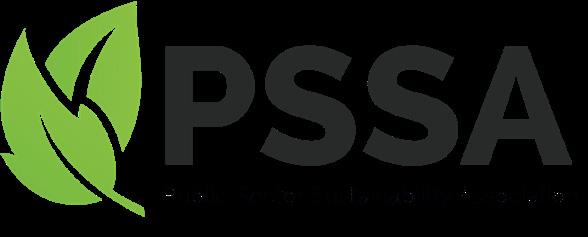
Microgrids (selfsufficient energy systems serving specific sites) offer a decentralised solution to energy needs. By incorporating distributed energy sources and energy storage, microgrids enhance resilience and minimise reliance on the central grid, particularly in areas with constrained infrastructure.

Onsite energy storage solutions, such as long-duration battery systems in particular, provide an ideal avenue for businesses to manage local demand and generation effectively. By optimising energy usage and reducing transmission losses, these storage solutions offer a cost-effective alternative to grid upgrades and enhance the integration of renewable energy resources.
While addressing grid constraints is essential for decarbonisation efforts, businesses can also enhance resilience and mitigate risks by diversifying their energy sources and adopting a multifaceted approach to energy management.
WORKING WITH A NET ZERO PARTNER
When embarking on alternative approaches to overcome grid constraints and accelerate decarbonisation efforts, organisations should engage with expert energy consultants to navigate and implement such complex solutions exampled above, ultimately advising you on the most viable route forward for your business.
A strategic net zero partner like SMS can guide the establishment of microgrids, for instance, ensuring they are designed to optimally balance load and generation
while enhancing resilience against grid instability. SMS can also aid in integrating onsite energy storage systems to manage energy flows and optimise usage in line with the business’s operational demands and sustainability goals.
Furthermore, by leveraging expertise in renewable energy technologies, carbon reduction experts like us can help businesses diversify their energy sources creating a robust, multifaceted energy management strategy that reduces grid dependence, shields against price volatility, and boosts energy security.
Overall, our role is pivotal in crafting a tailored, strategic approach that not only addresses grid constraints but also positions your business’ long-term energy efficiency and cost savings.
LOOKING AHEAD: CLEARING THE PATH TO RESILIENT, SUSTAINABLE ENERGY
As businesses chart their course towards decarbonisation and electrification, overcoming grid constraints has emerged as a critical imperative. By forging strategic partnerships and leveraging alternative energy solutions, businesses can surmount the challenges posed by grid limitations and accelerate the transition to a resilient, sustainable energy future. https://www.sms-plc.com/

A wide group of people working across all areas of the Public Sector – to educate, train, support and connect as we work towards a more sustainable future.
17 ENERGY MANAGER MAGAZINE • JUNE 2024 DECARBONISATION
www.pssa.info Join
us today

CHOOSING THE RIGHT ENERGY BUREAU SERVICE IN 10 STEPS
Navigate the complexities of outsourcing your energy management with these expert tips from TEAM Energy.
If your business has an energy management team who is allocating vast amounts of time to checking energy data and analysing invoices, outsourcing to an energy bureau service will allow them to apply their strengths and core competencies elsewhere. By assigning these tasks to a professional service provider, your energy management team can focus on strategic carbon reduction activities and dedicate time to planning for a net zero future. Outsourcing your utility suppliers bill validation to an energy management bureau can provide significant benefits including:
• Increased efficiency
• Access to domain expertise and facilities
• Risk mitigation
• Increased cost recovery. Choosing the right energy bureau services for your needs can significantly impact your organisation’s energy management, carbon reduction and cost savings.
1.
EXPERTISE AND EXPERIENCE
Look for an established bureau service with a proven track record and years of experience working with utilities suppliers. An established bureau service that is supported by a team of industry experts with a wealth of knowledge can provide valuable insights and guidance.
2. RANGE OF SERVICES
Look for a bureau that offers a comprehensive portfolio of carbon and energy management services that align with your organisation’s specific needs.
3. BILL VALIDATION CAPABILITIES
Ensure the bureau service provider offers a full bill validation service covering

all charge elements of your utility suppliers bill including network charge validation (TNUoS and DUoS). Check their readiness to support the Market Wide Half Hourly Settlement industry change.
4. CUSTOMISATION
The energy management bureau should be able to tailor their services to fit your organisation’s unique requirements, providing personalised solutions rather than a one-size-fits-all approach.
5. COST-EFFECTIVENESS
Compare the rates offered by different bureaus with the depth and quality of service they can provide.
6. CUSTOMER SERVICE
A bureau that provides excellent customer service with specialists available to address your concerns can make the process smoother and more efficient. Check the supplier’s ability and flexibility in terms of service setup, data migration and their overall quality management framework.
7. TECHNOLOGY AND TOOLS
Check if the bureau utilises advanced technology and automation tools for accurate data handling, reporting, carbon and energy management. These technologies should support automated data integration including API, EDI, IoT and seamless integration with your in-house business intelligence and financial accounting software.
8. ACCOUNT MANAGEMENT, TRANSPARENCY AND REPORTING
The right energy bureau should offer transparent reporting and clear communication about your carbon data, energy data, savings opportunities and recoveries. Your service provider should assign to your account a name service delivery manager, deliver off-the-shelf reporting templates, build you own reports and integration capabilities with your in-house reporting tools.
9. COMPLIANCE AND SUSTAINABILITY
It is important to choose a bureau that can help your organisation to meet its regulatory requirements, support your sustainability goals and security requirements. Check for security certifications to include ISO 27001 and Cyber Essential Plus.
10. REPUTATION
Ensure that your supplier has the appropriate Net Zero ambitions and carbon reduction strategies in place supported by a robust environmental management framework so as not to add to your scope 3 emissions.
A good energy management bureau should make the process hassle-free, taking care of all aspects of carbon and energy management so you can focus on your core operational activities. www.teamenergy.com
18
ENERGY MANAGER MAGAZINE • JUNE 2024
ENERGY MANAGEMENT

LESSONS FROM THE UK’S LARGEST VOLTAGE OPTIMISATION PROJECT
The
four
steps to success when considering VO technology

Ahangover from the standardisation of grid voltages across Europe means that the UK Grid can provide electricity at a much higher voltage than strictly necessary. Standard electrical equipment is designed to receive 220V, but the UK supply averages 242V and can be as high as 253V. This means that most of us are using – and paying for – more electricity than we need.
Voltage optimisation (VO) technology tackles this inefficiency by acting as a voltage regulator, supplying only the exact amount your equipment needs. The result is an average reduction in electricity use by eight per cent. Supplying the correct voltage also reduces maintenance costs, because overvolted equipment suffers a reduced lifespan.
INVESTIGATE
Before deciding whether to invest in VO, you’ll need to know what return you can expect. Taking time to monitor a site’s power supply makes it possible to accurately calculate potential savings.
Passively monitoring your power supply with data loggers for four to six weeks is a non-intrusive way to build a detailed picture of voltage stability and load balance across all phases. This information is crucial for determining the exact amount of excess electricity your site is receiving and the potential cost savings, typically accurate to within one per cent. With this data, a simple calculation reveals a VO system’s payback period,
usually under 18 months. Furthermore, some providers offer guarantees that your savings will meet the calculated amount.
An added benefit of this careful monitoring is that once the technology is installed, it shouldn’t require any ongoing maintenance or adjustment. In my experience, only about one in ten sites need a subsequent visit to tweak the settings and maximise savings.
ELIMINATE
The eight per cent average mentioned earlier takes into account the fact that some types of equipment provide better savings with VO than others. For instance, LED lighting and variable speed drives don’t typically contribute significantly to savings, so should be excluded from calculations.
However, we’ve found that even when disregarding 50 to 70 per cent of the entire load on a site, it’s still possible to get savings of five to ten per cent. On top of that, VO will still make the equipment last longer and provide maintenance savings.
INTEGRATE
It’s important to include any on site renewable energy systems when considering VO. People often say that wasting electricity doesn’t really matter if you generate it with renewables, because wind and sunlight are free. In reality, there’s still a tariff on renewable electricity: it’s kWh of electricity generated in the system’s lifetime divided by the cost of the system.
Whether you’re looking to boost your company’s green credentials or simply cut costs, voltage optimisation (VO) can help by reducing electricity consumption by an average of eight per cent. Here, James Goodby, director of voltage optimisation specialist, Powerdown220, shares what he learned while managing the country’s largest ever VO project.
Combining VO with a system that generates electricity can help in two ways. First, it makes the electricity you generate go further by wasting less and improving efficiency. Second, if you are selling electricity to the grid, wasting less means you can sell more, improving ROI.
COORDINATE
Meticulous logistics planning is key to a smooth installation process, particularly for VO rollout involving multiple sites. By carefully synchronising production schedules, delivery timetables and installation crews, each VO unit can often be installed within a tight 30-minute window, minimising disruption even for high-volume installations of ten to fifteen units per day. If you’re considering a project involving multiple sites, you might benefit from choosing a VO provider with experience managing large projects. By cutting electricity use, voltage optimisation delivers both financial and environmental benefits. For Dale Fenton, energy manager at Mitchells & Butlers, who commissioned the UK’s largest VO project, the technology ‘‘ticked both boxes’’. If you’re wondering if VO could benefit your company, try our free voltage optimisation savings calculator at Powerdown220.co.uk
19 ENERGY MANAGER MAGAZINE • JUNE 2024 ENERGY MANAGEMENT


PROACTIVE BATTERY STORAGE SOLUTIONS
Pan European distributor, Ecobat Battery, used the recent Solar & Storage Live event held at ExCeL London to launch the latest additions to the EcoFlow range of backup power units for houses, the PowerOcean Single-phase and PowerOcean Three-phase.
Whereas the original EcoFlow PowerOcean DC Fit was primarily designed as a retrofit solution to existing properties, or for renovation projects, these two versions are aimed fundamentally as first fit additions to new build installations to provide these buildings with both off-grid security and fiscal benefits as a standard feature.
For most domestic applications, it will be the single-phase version that will be the option of choice and with up to six kW of continuous power, it has the capacity to backup all essential home appliances together, and ensure an uninterrupted power supply until the grid kicks back in, or the solar supply comes back online.
With the vagaries of changing weather always a potential issue, both versions are equipped with a built in charge controller that seamlessly switches the supply to the ideal source, which provides the
ultimate in performance, day or night and in whatever weather conditions. It also updates remotely, without interrupting the system or its output.
Fully compliant for home installation, the elegantly designed modular system can be tailored to the needs of the individual home and either mounted on a wall or free standing, outside or undercover, and with IP65 certification, it is highly resistant to dust and water ingress, even from low pressure water jets.
With the EcoFlow App, installers can not only commission the system quickly and efficiently, but also diagnose and remedy faults remotely, and home owners can manage the system and ensure it achieves its greatest possible power generation and consumption potential, even when away from home.
To ensure the highest level of power security, the system can be backed up with a 4G dongle ESS, which ensures
network connectivity should the normal Wi-Fi or ethernet network be interrupted. Although perhaps more suitable for smaller commercial applications, the three-phase version of the PowerOcean solar power storage solution has all the benefits of its single-phase cousin, but with the option of six, eight, 10 or 12kW capacities.
The EcoFlow PowerOcean series is designed around the advanced PowerOcean LFP battery, a high-voltage battery system that is connected in parallel. Users can enjoy the flexibility of starting with a single battery of five kWh, expanding their system at any time. With trusted LFP battery chemistry and fire-preventing safety measures, they deliver unrivalled battery reliability and performance, providing in excess of 6,000 cycles and with a warranty of 15 years. Further information can be found at: www.ecobatbattery.com/brands/ ecoflow/
20 ENERGY STORAGE ENERGY MANAGER MAGAZINE • JUNE 2024

THERMAL ENERGY STORAGE: A CLOSER LOOK AT THE OPTIONS
The need for an increased reliance on renewable energy regularly surfaces as we try to combat climate change. The latest COP28 agreement spelt it out clearly, calling for a tripling of renewable energy capacity and doubling of energy efficiency improvements by 2030. It is a bold but necessary ambition to get anywhere close to achieving net zero goals in the timescale needed.
A subject that is often overlooked is how best to manage the unpredictability of renewable energy supply. And, when it is discussed, it often focuses on issues at a high level, like grid distribution and national power supplies. However, it can take up to 15 years for expansions to electricity grid transmission and distribution networks to come into effect. With the need for immediate action to limit the impact of climate change, there is an urgent need to look beyond centralised power generation, and towards localised heat generation.
“The peaks and troughs in supply from wind and solar resources, and the considerable increase in demand as heat is electrified means it makes sense to look at opportunities for new synergies between the power and heat sectors.”
Thermal energy storage (TES) and other forms of long-duration energy storage (LDES) are two promising avenues to maximise the potential of an evolving situation.
The need to adopt methods of TES as we continue the journey towards a more sustainable future is clear. And, as technologies evolve to meet this demand, it is worth considering the wider impact these options might have on our environment, beyond factors like capital costs, efficiency, and energy output. Here we look at two alternatives and consider some of these issues.
A NEW ALTERNATIVE: THE STEAMBATTERY
At Spirax Sarco, together with colleagues at Chromalox, we have developed an innovative form of TES: the SteamBattery. This stores heat generated by an immersed electrical heater as high-pressure hot water in a well-insulated vessel.
When steam is needed from the SteamBattery, it is taken from the ullage (gas) space of the vessel, and is either used directly as steam, or indirectly through means of a heat exchanger to connect with a “wet” heating system. The condensed steam is returned to the vessel. As the steam

is used, the pressure lowers to the point where the SteamBattery is fully discharged. It is recharged by the immersed electrical heater, which is able to use electricity from direct renewable sources or from the grid when low-cost renewable power is available. It can both discharge steam and be charged simultaneously, giving flexibility in how it is employed, and as buffer storage. Able to fully charge within 8 hours, it is able to do so overnight.
CONSIDERING THE WIDER ENVIRONMENTAL IMPACT
Using current literature on LIPBs alongside our model, and existing studies for the SteamBattery, we aimed to compare the environmental impact of these two energy storage solutions. There were some limitations, due to the boundaries set by the LIPB studies; notably a cradle-to-gate approach that doesn’t consider either their transportation or disposal at end-of-life.
Once the system boundary was established, a range of comparative environmental impacts could be assessed. Due to differences in the models used between the LIPB study and that for the SteamBattery, we found 10 of the 18 in the LIPB study offered a direct comparison.
Greenhouse gases (GHG):
These are the most relevant to climate change impact, and are measured in kg of carbon dioxide equivalence. The results shows that the SteamBattery would emit 8.58 kg/1000 kWh of energy stored throughout its lifetime, whereas the LIPB emitted 16.10/1000 kWh throughout its lifetime. Effectively, the SteamBattery has half the CO2 emissions of the LIPB throughout its useful lifespan
Effect on ecosystems:
We examined six environmental impact categories, including those that cover ecotoxicity and eutrophication in marine and freshwater environments, plus acidification and ecotoxicity in terrestrial ones. For both freshwater and marine environments, the SteamBattery was found to be 95% less impactful compared to the LIPB. This was largely accounted for by the cathode plate manufacturing process needed for the LIPB. When looking at the terrestrial impacts, a different picture emerges. The SteamBattery’s sulphur dioxide production was 83% less than the LIPB. However, its dichlorobenzene equivalent was higher than the LIPB. A closer examination, considering the impact loads of both products across the different environmental categories, concluded that this was an area for potential improvement rather than a serious flaw.
The assessment further highlighted SteamBattery’s reduced impact on natural resources, such as fossil fuels and water. Notably, the highest environmental loads were predominantly associated with the LIPB, particularly in marine and freshwater ecotoxicity, whereas the SteamBattery’s most significant impact was considerably lower in terrestrial ecotoxicity.
As the need for sustainable steam systems grows, there is a clear imperative to consider more than simply avoiding fossil fuels. The planet’s resilience and future depend on a host of other factors, with environmental considerations high on the list.
This initial study shows a more holistic survey of potential options should always be considered before final decisions are made. www.spiraxsarco.com
21 ENERGY MANAGER MAGAZINE • JUNE 2024 ENERGY STORAGE
Photo by Matthew Henry on Unsplash

HOW ENERGIVAULT® IS REDEFINING THE POSSIBILITIES OF THERMAL ENERGY STORAGE
Bob Long, founder and Executive Chairman of Organic Heat Exchangers (O-Hx), explains why its EnergiVault® cold thermal energy storage system ticks all the right boxes for reducing energy costs, cutting carbon emissions and improving operational resilience.
The global demand for cooling, already a huge burden on electrical grids, continues to grow, driven by factors including climate change and the growth of urban areas. The need for new ways to store energy to help meet this demand and reduce the cooling industry’s impact on the environment was behind the creation of O-Hx in 2016.
Most modern cooling is powered by electricity and energy providers are working towards providing a more sustainable supply. Renewable energy levels are not yet able to meet baseload demand, however, and this presents a considerable obstacle to decarbonisation.
Carbon intensity is an indicator of how clean our electricity is, measuring how many grams of carbon dioxide (CO2) are released to produce a kilowatt hour (kWh) of electricity. Electricity generated using fossil fuels is highly carbon intensive because the production process creates CO2. Renewable energy has a much smaller carbon intensity value (often zero) because its production results in far fewer emissions.
The globally patented EnergiVault® from O-Hx is an innovative bolt-on cold thermal energy storage (CTES) system that adds a wide range of benefits to industrial and commercial chiller operations. This makes it an ideal partner for both space and process cooling, including the food chain, pharmaceutical, healthcare, data centres and other sectors. Crucially, it uses artificial intelligence to access the electricity supply at low tariffs and at periods of low carbon intensity, reducing both energy costs and environmental impact.
EnergiVault® enables conventional chilled water systems to reach their full potential by offering:
• The ability to overcome site power limitations
• High peak cooling versus input power
• Ultrafast response to cooling demand
• No lifetime degradation
• >20-year battery lifetime
HOW IT WORKS

EnergiVault® consists of a charger and thermal store, or battery, an insulated container available in 1MWht capacity units which are modular and fully scalable. The system can be used alongside an existing chilled water system, on its own, or in place of an additional chiller. As with a chiller added to meet increased peak cooling loads, it can reduce the risk of production or building shutdowns, while additional features such as time of use (ToU) shifting, chiller optimisation, heat recovery and energy monitoring can be applied
across a site’s entire cooling plant.
The system’s ice crystalliser charges the battery by converting the heat transfer fluid (HTF), typically a water/ glycol mix, into spherical ice crystals a fraction of a millimetre in diameter, each surrounded by a film of organic material. This binary ice acts as the phase change material (PCM), delivering a massive increase in the surface area over which thermal transfer takes place.
The energy exchange rate of a single block of ice would be lower than that found with multiple shards of ice, or an ice slurry. Each crystal has 66% useable energy in relation to its volume when stored inside the thermal battery and takes the shape of a perfectly spherical crystal to avoid the clumping typically found in dendritic crystals. The spheres are surrounded by a parent fluid specially formulated with a freezing point below the ice sphere it supports, thus inhibiting fusion while in storage.
Other phase change batteries have the limitation of a low discharge rate because of the surface area to volume ratio and cannot always meet a required load. By maintaining an ice slurry as its thermal store, EnergiVault® increases the range of energy transfer at any given time.
A standard 1MWht unit has a modulation range of 0-500kWt and can deliver 200kWt of cooling for 5 hours. Its rapid response capability means it can go from 0 to 200kWt rated cooling power in two minutes.
Recent developments have seen O-Hx further optimise the thermal battery, achieving an impressive 25% increase in its storage capacity, while significant cost reductions make this cutting-edge technology more accessible and financially attractive.
22 ENERGY STORAGE ENERGY MANAGER MAGAZINE • JUNE 2024
EnergiVault® cold thermal storage system


EnergiVault® integrates seamlessly with existing chilled water circuits and building management systems. It collects data from the national grid and optimises to use low carbon intensity energy and cheaper energy tariffs.
We are not just redesigning; we are redefining what is possible in thermal energy storage. The resulting improvements in efficiency and affordability translate into a quicker return on investment for customers, aligning economic benefits even more closely with sustainability goals.
HOW IT SAVES MONEY
CTES systems like EnergiVault® provide real benefits when considering ToU shifting for the energy consumed to provide cooling. Taking advantage of the cheapest available tariff is the most obvious plus point, but there are numerous additional features that make EnergiVault® even more beneficial to both bill payer and the environment. EnergiVault® is running on the cheap energy of last night, deployed today to offset the client’s needs.
ToU shifting is one of EnergiVault’s scalable control strategies, which allows integration with existing systems and live external data. Applications such as food production factories with large renewable energy generation systems can benefit through operational cost reductions. By integrating on-site generation, such as solar PV or wind turbines, EnergiVault® can adjust its charging period to maximise the consumption of energy that is being generated, but not necessarily used, on site. It also displaces high-cost grid imported electricity at peak times.
With regard to heat recovery, as heat energy is removed from the HTF circulating around a building, the waste heat would typically be rejected

into ambient air at the condenser. However, with EnergiVault® this waste heat can be utilised to generate hot water, space heating and other process heat requirements. Both high grade (100°C) and low grade (40°C) heat generation is possible with multiple storage options to harness the heat recovery potential, decoupling from the EnergiVault® charging process for flexible, on-demand use.
ENERGY MONITORING INSIGHT
Maximising all possible energy savings requires a system that can fully integrate with existing installations and monitor all aspects of performance. EnergiVault® delivers a solution that can adjust third-party setpoints depending on load requirements and judge efficiencies with enough intelligence to maximise them by completing the takeover of demand or providing supplementary cooling.
Monitoring half-hour energy supply data enables judgements on:
• When to charge EnergiVault®
• When to turn existing chillers off
• When to operate in unison
ENERGIVAULT® VS ADDITIONAL CHILLER
Although most commonly used alongside an existing chilled water system
as outlined earlier, EnergiVault® can also be deployed instead of an additional chiller. As with a chiller added to meet increased peak cooling loads, it can reduce the risk of shutdowns, spoiled produce or compliance issues, and boosts chiller capacity while avoiding the higher capital costs of underutilised, peaking chillers. With many sites struggling to achieve the required power supply for multiple chiller installations, the system also delivers high-capacity cooling from low current input and high-capacity cooling when connection power is limited.
SUMMARY
The modular design of EnergiVault® offers significant advantages to any potential customer. It allows for scalable solutions tailored to varying cooling demands and site-specific requirements. This flexibility is vital for meeting the diverse needs of end users, ranging from industrial facilities to commercial spaces.
Clients are particularly interested in how multiple EnergiVault® units can be integrated into their existing systems to enhance efficiency, resilience, and sustainability. The ability to incrementally increase cooling capacity and energy storage aligns closely with the increasing demand for more adaptable and environmentally friendly cooling solutions.
For more information visit https://www.o-hx.com/
23 ENERGY MANAGER MAGAZINE • JUNE 2024 ENERGY STORAGE

RINNAI’S NEW HIGH-EFFICIENCY, SPACE SAVING EXTERNAL
CONTINUOUS FLOW HOT WATER HEATERS NOW AVAILABLE
Rinnai is launching the Infinity E series of externally mounted continuous flow water heaters. Each unit arrives with water ingress protection (IPx5D) and provides a limitless volume of temperature controlled clean hot water, whilst electric, gas and water services are connected. The gas-fired water heaters are lightweight (18kgs) meaning that there is no need for heavy lifting gear.
The continuous flow water heaters are powerful yet diminutive with a max flowrate of 20 litres per min making them an ideal water heating solution where space is limited.
For a brochure on this new range of external water heaters contact the company direct with the following link – https://www.rinnai-uk.co.uk/ contact-us/request-brochure
The 17e Hydrogen 20% blend ready certified gas-fired water heater is an ideal solution for glamping sites, leisure facilities, festival ablutions, small commercial outlets and where a requirement for cost effective and durable appliances is needed. The inclusion of micro-processors enables the customer to pre-set water temperature that is delivered accurate to +1 / -1 degree of the set point helping eradicate legionella proliferation and delivery temperature inaccuracies that can create discomfort or scalding. These features have ensured that Rinnai external continuous flow water heaters are used widely in equine and leisure industries.
Rinnai continues to introduce innovative technological solutions to hot water and heating provision in domestic and commercial applications. One such innovation is inherent within E series as the gas-fired water heaters are fitted with micro-processors that will measure incoming water temperatures and modulate gas input. This guarantees the system will only use the required amount of energy to increase water temperature
whilst supplying litre upon litre of clean hot water.
Rinnai’s
Infinity E Series features an internal monitor that regulates hot water temperature. If any fluctuations rise above 3 degrees of the maximum set temperature, operation of the system will immediately stop ensuring customer safety and low operational costs.


Direct force exhaust
Temperature Range 37-65°C
• Ignition Method Direct electronic
• IPx5D rated.
• Gross Efficiency 93%
Additional features that are included when purchasing the Rinnai Infinity E Series are as follows:
• Compact size saving wall and floor space (dimensions length 531x 270x 191)
Lightweight 18kgs (no need for heavy lifting gear)
Hot Water Delivery Capacity max flowrate 20l/min
• Temperature Accuracy -1 / +1 from the appliance setpoint
• Net Efficiency 103% Rinnai understands the UK customer requirement for cost effective and robust appliances that consistently deliver clean hot water and heating to domestic and commercial buildings across the UK. Rinnai are committed to offering UK customers with low cost and practical solutions that cover all energy options. www.rinnai-uk.co.uk

24 HEATING ENERGY MANAGER MAGAZINE • JUNE 2024

SHOULD STUDENTS PAY DIRECTLY FOR THEIR ENERGY?
Adrian Barber of Prefect Controls investigates shifting the responsibility for payment of energy bills.
Can over-consumption and antienvironmental practices in student accommodation be blamed on “all-inclusive rent” packages?
The inclusion of utilities has become standard practice for many providers and is popular with students. Marketing of rooms is easier and more attractive when fixed rents are offered, and occupants aren’t worried about finding money to pay the energy bill at the end of the month.
Surveys regularly return high scores regarding student concerns about sustainability. However, in the privacy of their rooms, their principles may be challenged if the choice between wearing a jumper or turning up the thermostat doesn’t impact their bank balance.
There is an opinion amongst some providers, particularly since the rapid rise in energy costs, that charging occupants by consumption should return. In an erratic market, passing on the energy costs relieves providers of price hike uncertainties. It could also be a valuable lesson for the energy consumers of the future – to be aware of costs!
We could see ‘no-frills’ accommodation providers emerging, like some well-known airlines. Where the headline rent is alluring, but when necessities such as heating is ‘added-on’, the offer is not so attractive.
Does this provide a potential for greater transparency, giving occupants
a choice of how they spend their allowance? Or conversely the possibility of cold, uncomfortable rooms with potential health and structural issues caused by humidity and dampness.
A ‘fair usage policy’ is another approach that has been mooted. This is where an amount of energy is included in the rental, but an agreed rate is charged for consumption over and above. This would provide comfortable environments, mitigate issues arising from under-heating, and enable those wanting greater warmth to have it – but at their own expense.
Properties where residents are charged individually for their energy, require MID approved meters in each room (Measuring Instruments Directive MID 2014/32/EU). This approach would bring with it major installation undertakings and cost of retrofitting apparatus. Plus, the headache of administering the billing process.
Technological progress is heading towards individual measurement being viable, but what is the demand?
I am sure that students, probably in greater numbers than the wider population, are aware of why energy needs to be conserved. I’m also sure they aren’t flagrantly using it unnecessarily.
It’s the inadvertent wastage that requires attention.
If room by room measurement becomes feasible, incentives may be attractive.
Two alternatives sprang to mind: A rebate at the end of term as a reward for conscientious use could be welcomed by many. But this doesn’t remove the infrastructure and administration issue; Driving a behavioural change programme could yield results. But this would need to be repeated every year as a new cohort of residents moves in.
Accommodation providers know the proportion of income they allocate to energy. But changing their business model to reduce rents and then charge ‘add-ons’, is perhaps a step backwards.
Sufficient energy must be used to maintain comfort. Whoever it is that pays, the cost won’t be reduced! The key is not restricting consumption, it’s identifying unnecessarily used energy – In empty rooms; When thermostats are constantly at maximum; If heaters are on, and windows are open.
In these cases, ‘automating control’ significantly reduces energy input, and is perhaps a less challenging solution. I visited a building recently installed with automated central control. During the first year, the heating load of 400+ bedrooms has halved, saving close to £70K per year.
Energy isn’t being restricted; it’s simply not being used unnecessarily. www.prefectcontrols.com

HEATING
25 ENERGY MANAGER MAGAZINE • JUNE 2024

POPULAR NOR RAY VAC HEAT SYSTEM RELAUNCHED WITH EFFICIENCIES TO CUT COSTS AND ECO IMPACT
A heating system has been relaunched by leading manufacturer Reznor UK to give users greater control to boost efficiency levels and reduce running costs.
The Nor Ray Vac system, a gas fired continuous radiant tube heating system, has modulating burners for improved efficiency and control, provides better uniformed heat coverage thanks to its continuous radiant tube, with a filtered burner air inlet helping keep the burner head and components clean.
Boasting an aesthetically pleasing, bespoke appearance it can be tailored to suit building shape and size, while its NR40 rating means noise levels are lower than other systems on the market.
Offering a larger rated burner than before, it has more burners per fan which means less flue points. With a long continuous tube which can reach 84m, the Nor Ray Vac system can be used in rail sheds and aircraft hangars or other large open spaces.


Richard Leese, European General Manager at Reznor UK, said: “Reznor UK has always been committed to providing premium heating solutions combining comfort, efficiency, and reliability, so with the relaunch of the Nor Ray Vac system, we are taking these principles to new heights.
“Installation is quicker, it is easier to maintain and it is easier on the eye, all while maintaining the functionalities that make Nor Ray Vac an industry name.
“The Nor Ray Vac has been popular so when we put production on hold in 2022 we took the opportunity to simplify the system to manufacturer, ensuring we kept to its original great design.
“We are looking forward to building upon the system’s heritage by engaging with consultants, end consumers and contractors to demonstrate how the Nor Ray Vac system is tailored for both small and large buildings.”
The Nor Ray Vac System have been used in a range of premises including aircraft hangars, garages and showrooms, greenhouses, museums, factories, warehouses, distribution centres, sports halls and large retail outlets.

Its reliability and safety of operation meets the latest European standard for multi-burner systems.
Reznor UK is a trusted supplier of efficient industrial and commercial HVAC solutions, specialising in warm air heating, radiant heating, air curtains and more. It is part of the most trusted worldwide HVAC manufacturer group, Nortek Global HVAC.
Operating for more than 100 years, Nortek works to a commitment to excellence and industry-leading innovations has set us apart.
Get in touch for more information, visit www.reznor.co.uk/nor-ray-vac/ or call 01384 489700.
26 HEATING ENERGY MANAGER MAGAZINE • JUNE 2024

RINNAI WARMS UP THE BONNY BANKS OF HOLIDAY LODGES ON LOCH LOMOND WITH OFF-GRID LPG CONTINUOUS FLOW HOT WATER HEATING UNITS
Rinnai 1600e continuous flow water heaters, powered by LPG, have been installed in accommodation units at an off-grid holiday park on the banks of Scotland’s Loch Lomond, the UK’s biggest body of freshwater at just over 36 kilometres long.
The Loch Lomond & Trossachs area is also a highly popular National Park – 1,865 sq. km (720 sq. miles) – and has a boundary length of 350km (220miles). Just over 50% of Scotland’s population lives within an hour’s drive of this National Park
The site, towards the southern end of the loch, is popular all-year round, as it is just 40 minutes from Glasgow. The site has a selection of lodges and chalets, many with outdoor hot tubs, accommodating up to 10 people per each unit. There is a leisure centre, swimming pool, restaurants and cafes plus communal areas used for concerts, especially tribute acts.
The Rinnai LPG water heaters are powered by LPG but can work just as efficiently on BioLPG – a lower carbon intensive alternative source of fuel. LPG is one of the lowest carbon emitting sources of fuel for the 15% of UK businesses and domiciles that function off-grid. Bio-LPG could be one of the replacements for LPG in the future meaning that off-grid sites can “dropin” lower carbon fuels of the future and Rinnai continuous flow water heaters will be ready, thus futureproofing their hot water heating provisions.
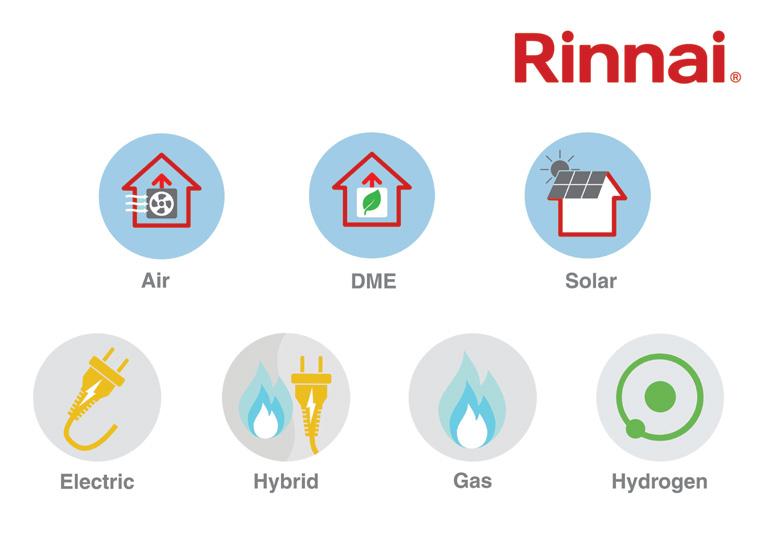
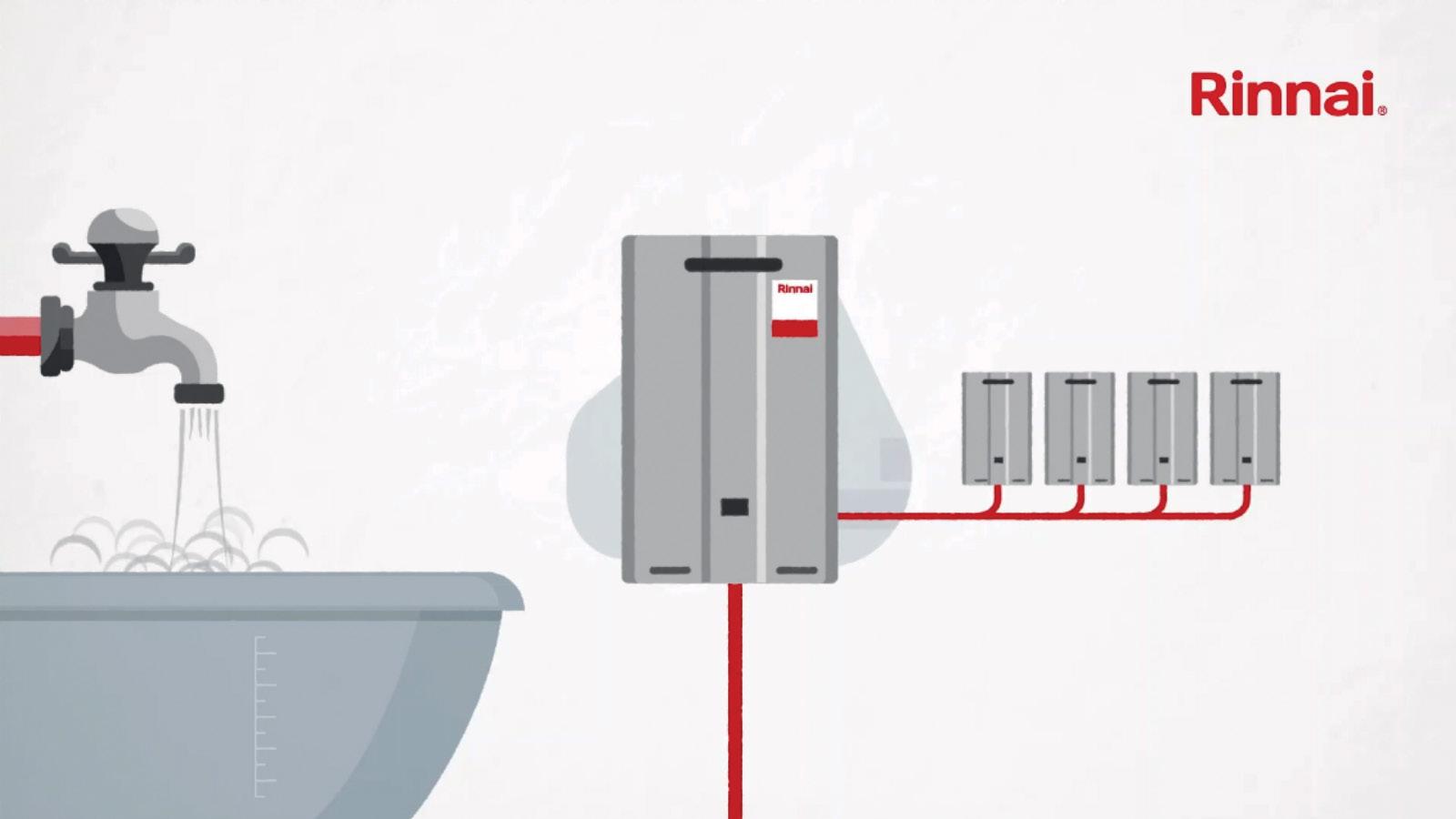
BioLPG consists of renewable materials derived from a diverse mix of sustainable biological feedstocks and processes. Supported through cleaner sourced chemical ingredients BioLPG provides huge benefits in carbon reductions and air quality, compared to traditional off-grid fuels such as heating oil.

Further alternative fuel sources such as renewable biofuel Dimethyl ether (DME) can also be employed by Rinnai continuous flow water heaters. Renewable DME is like LPG. It is a molecule-based fuel that can be produced through a wide range of renewable feedstocks which allows for quick and longterm sustainable production.
DME combusts cleanly and releases no “soot” emissions. Dimethyl ether has many fuel properties that make it easily used in sites and appliances using heating oil. It has a remarkably high cetane number, which is a
measure of the fuel’s ignitibility in compression ignition engines. The energy efficiency and power ratings of DME and heating oil engines are virtually the same. R DME is safe and reduces greenhouse gas emissions by up to 85% better improving local air quality.
Rinnai is pioneering product development to support the green fuels of the future so that LPG water heaters and boilers today are ready for a greener tomorrow.
Find out more about renewable liquid fuels by joining our newsletter at www.rinnai-uk.co.uk/ contact-us/newsletter-sign
27 ENERGY MANAGER MAGAZINE • JUNE 2024 HEATING

HOW TO OPTIMISE ENERGY EFFICIENCY WITH SENSOR SELECTION
SMALL INVESTMENT, BIG IMPACT
According to the International Energy Agency, the operations of buildings account for 30% of global energy consumption and 26% of global energy-related emissions (8% being direct emissions in buildings and 18% indirect emissions from the production of electricity and heat used in buildings). This sector therefore represents an enormous opportunity in the fight against climate change, and one of the key issues is the accuracy of indoor and outdoor measurements, when managing indoor environments.
The cost of accurate sensing technologies is negligible in comparison with the magnitude of the cost savings and the climate-related importance of energy efficiency. This was highlighted at COP28, where the global community agreed to double energy efficiency measures by 2030.
IT ALL STARTS WITH A SENSOR
Sensors and transmitters play an essential role in building automation and building management systems (BMS). Sensors are crucially important because everything the system does is based on measurements. The BMS monitors prevailing indoor and outdoor conditions through parameters such as temperature and humidity, and uses this data to manage the building as efficiently as possible. Precise indoor conditions can only be accurately maintained through accurate measurements that can be trusted to remain accurate throughout the life of the building.
Additional sensors may be necessary when a BMS is already in place and if there is a requirement to verify, monitor and optimise the building systems, or when a separate environmental monitoring system is required to monitor, map, and highlight trends. It may also be necessary to report to third parties, for example to show that service level requirements have been fulfilled.
Good HVAC measurements can reduce energy consumption, while inaccurate measurements can cause it to increase. For example, false high temperature readings can result in
Choosing the right HVAC sensors can have a significant impact on energy efficiency and power usage effectiveness (PUE).
Anu Kätkä from the measurement technology company Vaisala believes that while sensor costs are relatively small, their impact on energy use can be disproportionately large, and in the following article, she explains why….
excessive cooling. This means more energy is being used, resulting in higher costs and greater CO2 emissions. False low readings might result in insufficient cooling, which increases discomfort and risk to IT equipment. Similarly, if air is too dry it can cause short circuits in IT equipment, and too much humidity can cause damage from condensation. Although the tolerances of electrical equipment have increased, the consequences of inaccurate measurements and unreliable building systems can be dramatic.

CHOOSING A SENSOR SOLUTION
There are several important criteria to consider when choosing a sensor solution, including reliability, stability, accuracy, and the varying requirements of different applications. Stability is the most important criterion; sensors must be accurate and reliable even in demanding environments, both now and in the long term. When buying sensors, the datasheets of different suppliers may state similar accuracies, but this does not provide insights or verification of sensor accuracy after one year, or a few years.

28 HVAC ENERGY MANAGER MAGAZINE • JUNE 2024

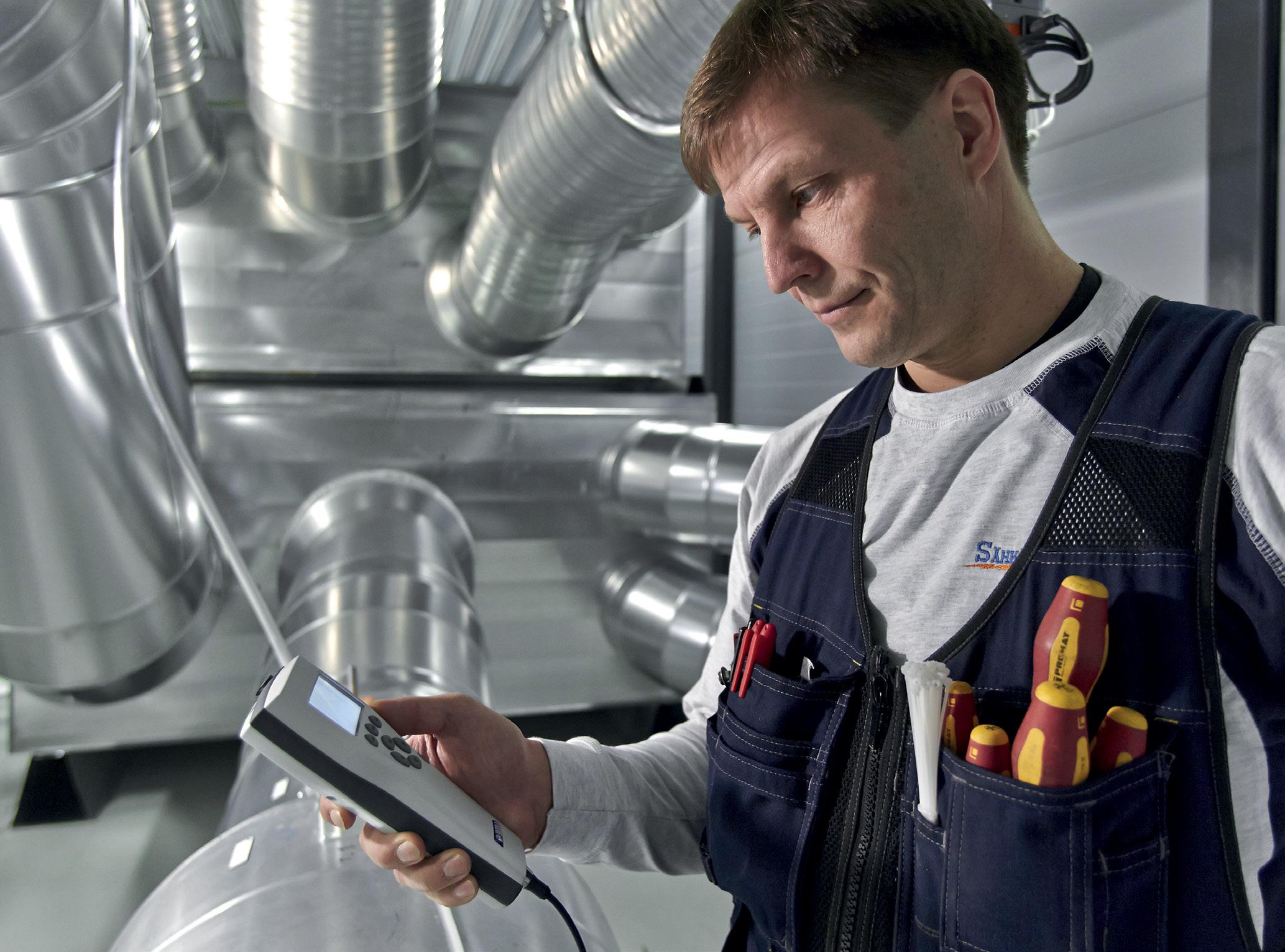
A low-quality sensor might break down faster, requiring maintenance or even replacement. However, a more serious risk is that the sensor might have drifted and be operating inaccurately without the user being aware. ‘Drift’ means that the measurement is no longer a valid input for the control system, and this can go undetected unless there is a visible consequence, like equipment being damaged by sub-optimal conditions.
All sensors drift, but some drift a lot or quickly, while others have good stability with minimal drifting; maintaining measurement accuracy for years. Therefore, the stability of sensors should be the most important factor to consider because it influences performance over a long time and is reflected in calibration and maintenance requirements.
In addition to good stability, highquality instruments are also easy to maintain, calibrate, adjust, and finetune. Having convenient tools for verifying and maintaining sensors and transmitters enhances reliability and provides peace of mind throughout the life of the instrumentation.
Sophisticated transmitters are also capable of providing calculated parameters (such as humidity) straight from the transmitter, which also improves both reliability and the ease
with which the system is commissioned. Other factors to consider include modularity, exchangeable probes, and convenience – installation and commissioning should be flexible, while calibration and maintenance should be as easy as possible. For example, a multi-use transmitter like the Vaisala HMT120 meets all of these requirements, allowing users to easily switch probes for calibration, for example. The measurement probe is either attached to the transmitter itself, or attached by a cable, so the transmitter can be somewhere easy to read while the measurement is close to the process it needs to measure.
SMALL INACCURACIES LEAD TO LARGE COSTS
Vaisala participated in a trial to simulate how much more energy would be used if there was just one-degree of temperature measurement error, causing too much cooling in a datacentre. The results showed that this one-degree error increased energy consumption by more than 8.5%. With the size of datacentres and assuming the same deviation can occur over a decade, this seemingly tiny error translates into many millions of euros of extra costs, particularly if server uptime is affected.
INVEST IN LONGTERM THINKING
Cheaper sensors will require more maintenance and need replacing more often, but the invisible threat is that they may drift without users even realising, leading to sub-optimal indoor conditions and poor energy efficiency. It is wiser to think long-term over the sensor lifetime and to understand and compare the total cost of ownership – when it comes to stability of measurement, the comparative unit cost is only a small part of the story. Real lifetime value is obtained when a decision is made to invest in reliable, high-quality sensors that maintain their accuracy in the long-term.
The more critical the building, the more important the sensors. Minimising the total cost of ownership is different to minimising the cost of investment. High-quality sensors will last 15–20 years, so it is worth purchasing those that maintain their accuracy over time and are designed for effortless calibration and maintenance. This will help to keep the facility running optimally, saving energy, saving money and improving the sustainability of the business. www.vaisala.com
29 ENERGY MANAGER MAGAZINE • JUNE 2024 HVAC

IDEAL HEATING LAUNCHES ECOMOD NATURAL REFRIGERANT COMMERCIAL HEAT PUMPS
Ideal Heating Commercial has launched its next generation ECOMOD heat pumps, with natural refrigerant. The first to be released this year is the ECOMOD 290HT, with ECOMOD CO2 to follow.
The ECOMOD 290HT is a monobloc air source heat pump able to achieve high temperatures up to 75°C, whilst benefitting from an ultra-low global warming potential (GWP) of just three as a result of the use of R290 natural refrigerant. An ultra-low GWP is not only good for the planet, but also makes commercial sense as high GWP refrigerants become increasingly scarce and therefore more expensive.
Available in three chassis sizes and five outputs from 15kW through to 50kW, ECOMOD 290HT has been specifically designed for use in larger commercial buildings and can be used in cascade to achieve even higher outputs. This latest generation of heat pumps can also be installed alongside other Ideal Heating commercial solutions, such as the EVOMAX 2 and the IMAX XTRA 2 commercial condensing boilers, to build a low carbon hybrid heating system.
With its ability to achieve high temperatures up to 75°C, ECOMOD 290HT is ideal for Domestic Hot Water (DHW) applications and district heating systems. Furthermore, with potentially no need to upgrade radiators with the ECOMOD 290HT, it is a practical, costeffective solution for retrofit installations.
ECOMOD 290HT comes with a high efficiency rating and high co-efficient of performance (CoP) rating of up to 4.94. The heat pumps also include an invertercontrolled compressor to accurately

match the heat demand based on the specific requirements, further enhancing the efficiency of a building. ECOMOD 290HT heat pumps are quiet in operation, with noise levels as low as 64dB(A).
ECOMOD 290HT models all represent the output at Air 7°C and Water 35°C.
Chris Caton, Product Director –Commercial, at Ideal Heating, comments on the company’s move into natural refrigerants: “We have led the way in commercial heating by ensuring our heating products are at the forefront of technology, quality and design by delivering both high efficiency and low running costs. This latest, innovative addition to our ECOMOD heat pump range, featuring natural refrigerants with ultra-low GWP, will ensure our customers have the best and most
advanced solutions for heating and hot water, while helping businesses in the UK on their journey to Net Zero.”
All ECOMOD 290HT heat pumps come with a five-year warranty when commissioned by Ideal Heating. Ideal Heating is the only manufacturer to offer a free of charge commissioning service across its full range of commercial ECOMOD heat pumps and condensing boilers, saving customers time and money, and ensuring appliances are correctly commissioned and operating.
Ideal Heating delivers commercial heating solutions that are at the forefront of technology and developed in line with the latest market trends and legislation. For more information visit: idealcommercialboilers. com/products/ecomod-290ht
HEAT PUMPS 30 ENERGY MANAGER MAGAZINE • JUNE 2024

HEAT PUMPS – IS THE INDUSTRY STANDARD UP TO STANDARD?
Leading Scottish University accommodation block switches heat pump to Rinnai Hybrid system
One of the oldest and most revered of Scottish universities has up graded its hot water supply in a large accommodation block to incorporate a Rinnai Hybrid system which instantly rectified problems with an existing heat pump configuration.
The project originally began in September 2022 to provide all the hot water needs of the 102-bedroom accommodation block via a two unit heat pump system with a total output of 60kW. The specification was changed, as these things mysteriously do happen sometimes, and it was reduced to just ONE 30 kW heat pump. The result proved totally inadequate for the demands of hot water for the bedrooms, common areas and communal kitchen.
Rinnai was approached to rectify the issue – and redesigned the system. The optimal solution was decided upon after considering the practical, economical and practical factors of the site. Therefore, a Hybrid heat pump and gas-fired system consisting of two I2HY20 Hydrogen blend ready continuous flow water heaters – in turnkey package format – and including a cylinder and expansion vessel. The new system was installed in January 2023 and, since then, there have been no problems with the supply of continuous temperature controlled hot water demand 24/7.
Rinnai offer design support that considers the nuances of all sites and produce a solution that considers capital expenditure, operational expenditure, and carbon modelling.
Comments Pete Seddon, Technical Manager for Rinnai, “The original schematics seemed to have no real provision to maintain the water temperature within the system and this only came to light AFTER the original installation. It relied on storage temp and recovery. Plus, the added atmospheric conditions on site – the heat pump performance reduced working at an outside temp of just -5 degrees and, of course, Scotland does have some harsh weather in winter.”
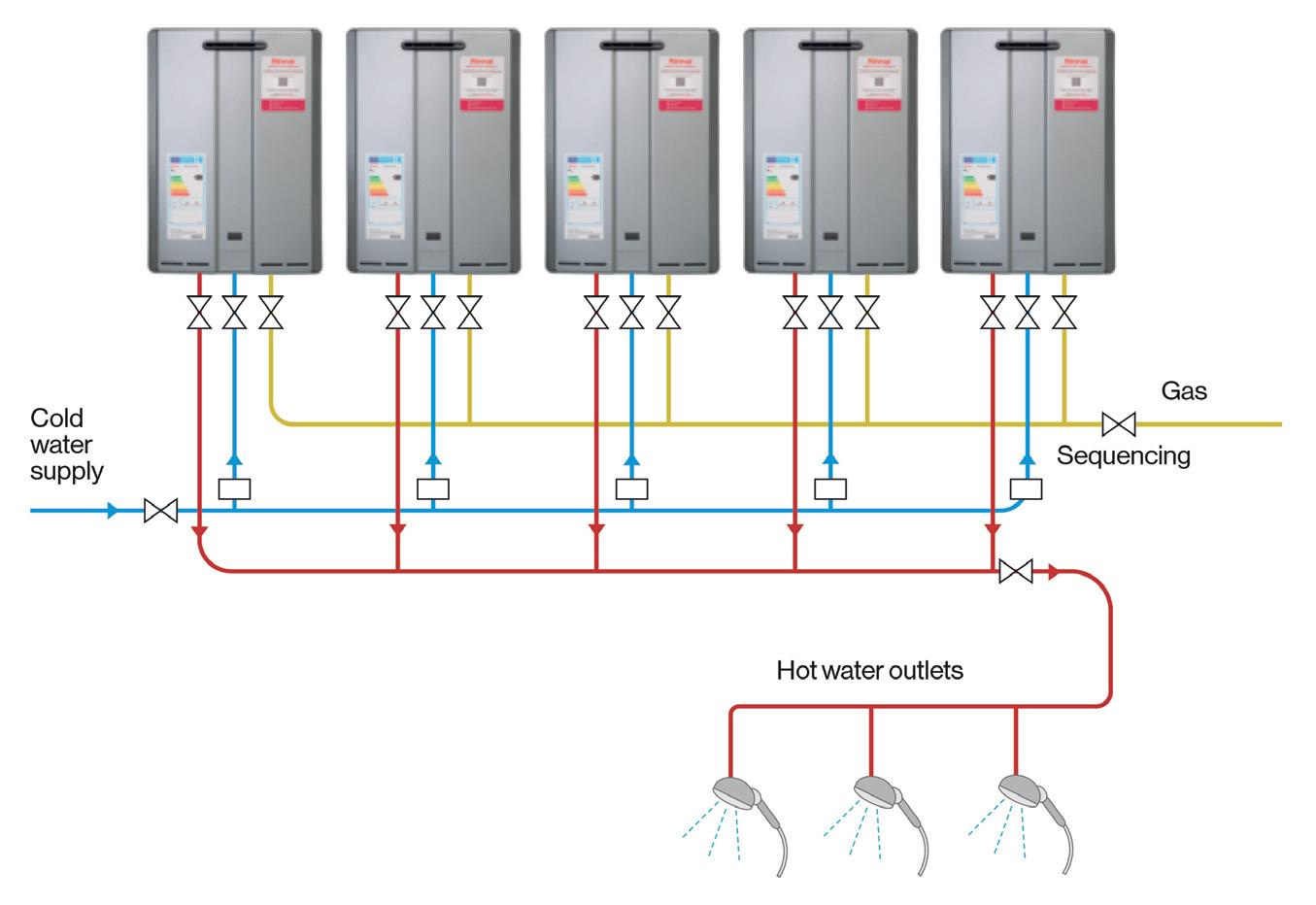
The Rinnai Sensei N 1600i – gas-fired continuous flow water heater – is the first ever continuous flow hot water heating unit manufactured with stainless steel heat exchangers which offers a greatly extended working life at optimum performance. Added to this are the market leading extended warranties, that accompany these hydrogen blend-ready appliances. The Rinnai N1600i offers a more compact, enhanced combustion design that allows for easier installation, superior operational performance as well as ease of serviceability.
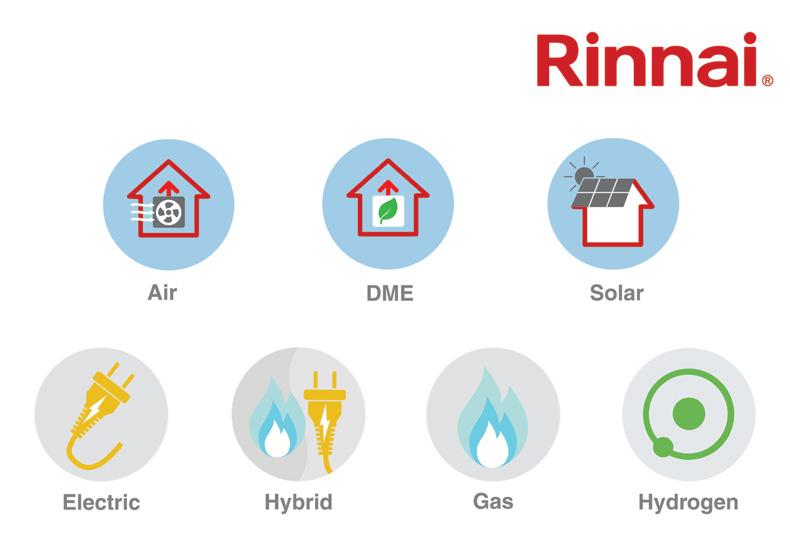
On site at this Scottish university the two N1600s are capable of delivering almost 2000 litres of temperature accurate continuous flow hot water suitable for commercial applications, the N1600i giving 954 litres per hour.
All the range is also low-NOx, and the futureproofed continuous flow water heater utilises Rinnai’s patented advanced burner technology with a 13-1 turn down ratio – the largest on the market – with extremely quiet operation. Integral controls on the units enable the water heater to achieve high efficiencies because of advanced burner control and
high modulation ranges. This wide range of modulation means that energy usage is completely optimised as the water heater through smart inbuilt controls will only heat the water to the temperature required thus preserving energy.
Rinnai also offer a complete Technical Support Service to include a FREE design service that incorporates the ideal heating and hot water system suited specifically to the customer’s property requirements and demands. A hot water and heating system designed to the specific needs of any site or application ensures that savings can be made in purchase and running costs, as well reducing carbon emissions.
Visit https://www.rinnai-uk.co.uk/ training/appliance-training-enrollment and select your course today!
HEAT PUMPS 31 ENERGY MANAGER MAGAZINE • JUNE 2024

BOILER & HEAT PUMP ACCESSORIES: A MAKE OR BREAK SITUATION
Charlie Mowbray, Senior Product Manager, Ideal Heating – Commercial
When it comes to a successful commercial heating installation, the boiler or heat pump are, of course, fundamentally important, but these appliances do not operate alone. Key components essential for quick, costeffective, simple and safe installation, and a well-designed heating system that performs to the standard expected, are the accessory parts. Accessories should never be an after-thought, but should be considered from the very outset.
In this article we look at the four most important accessories to a successful commercial heating installation. We provide advice on the different types available and their suitability for your project, along with recommendations on key features to look for to ensure the best possible cost and efficiency.
FRAME & HEADER KITS FOR BOILER CASCADES
When you have a site that requires a high output, you have the option

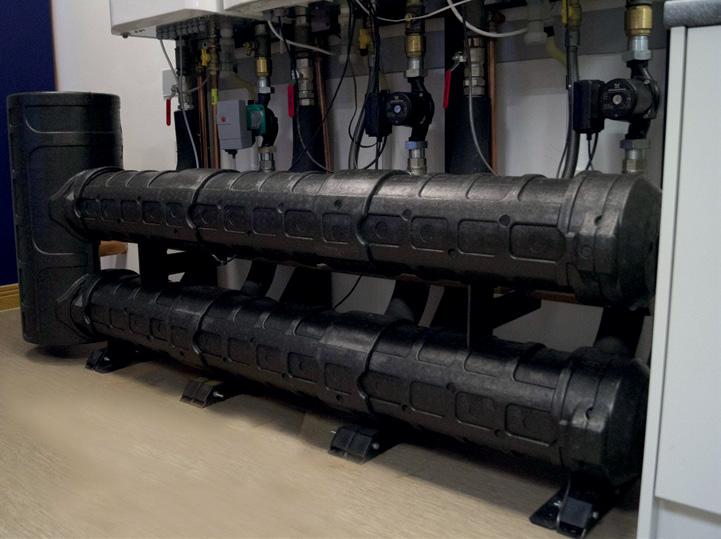
to install a single large commercial condensing boiler or several smaller boilers in a cascade. The cascade option offers several benefits, including a high turn-down, easier access to challenging install areas (as the parts are smaller and more manageable to handle) and, overall, the cascade can be space saving compared to an equivalent single boiler of the same capacity. For ease and speed of installation, most manufacturers supply prefabricated frame and header kits, removing the need to build (including welding in the case of steel frames) the support frame to mount the boilers and the pipework that all your individual boilers are connected to, including the connection pipework between the main headers and the boilers. All that is required onsite is to bolt the prefabricated sections together. In the case of Ideal Heating’s own frame and header kits, this can save the installer several hours compared to traditional site based fabrication, as they are already largely complete when received onsite.

to circulate through your new boiler as it may impact its efficiency, lead to boiler breakdowns and reduce its working life. System separation will prevent this. This can be achieved through using low loss headers and plate heat exchangers with filters or strainers, or air and dirt separators to assist with removal of harmful debris in the system.
The types of frame and header kits vary depending on the manufacturer, with inline headers being the most prevalent. Back-to-back versions are also available, along with standard and low height versions of the mounting frames for the boilers, so be sure to check your boiler manufacturer supplies frame and header kits that suit the plantroom you are working on.
HYDRAULIC SEPARATION
By their very nature, heating systems can become contaminated with debris and dirt over the years. When installing new boilers onto an old system, the very last thing you want is for that ‘dirty’ water
A low loss header is essentially a large chamber through which the system water flows at a low velocity. As the flow rate through the header is very slow, dirt and debris fall to the bottom, where they are removed via a drain valve. To prevent any of the debris that settles out being carried back through the boiler, low loss headers are normally mounted vertically. This also allows any air in the system flow to migrate up to a point where it can be vented. If you are using a horizontal low loss header, it’s important to employ additional dirt separation on the return to the main plant. In systems based on ferrous metals, such as iron and steel, consider using a magnetic low loss header which combines the benefits of a low loss header with the addition of a magnet inside it, capturing the magnetite particles as well.
Low loss headers have a further benefit in that they enable the boiler to operate independently to a system where the load is likely to be variable and the operating range for the system may not be ideally suited to the boiler. For
HEAT PUMPS 32 ENERGY MANAGER MAGAZINE • JUNE 2024

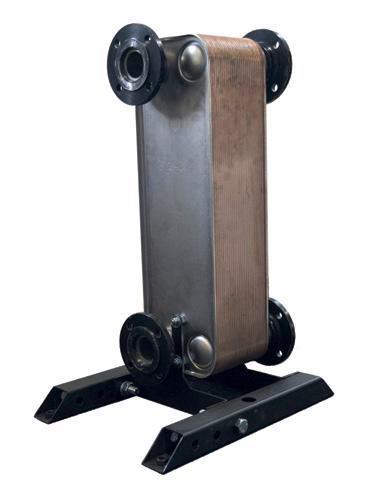
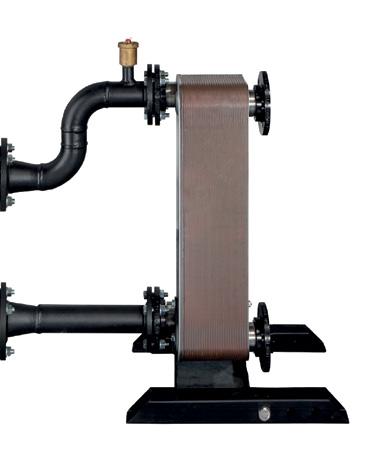
the boiler, if it was installed directly to the system pipework, a variable flow rate may lead to minimum flow rates for the boiler not being maintained. By keeping both systems hydraulically separate, each side of the system can operate without disturbing the other. The boiler can provide as little or as much heat input as is required, and the system load can vary over a very wide range without affecting the boiler.
When specifying a low loss header, talk to the manufacturer or the supplier to confirm that it’s suitable for the type of product you’re going to use it with and your expected flow rates. If the flow velocity in the body of the header isn’t low enough, you won’t get effective separation between the two systems.
Moving on to Plate Heat Exchangers, which are becoming the more popular choice, this method of separation works by transferring heat from the boiler circuit to the system circuit without the two circuits coming in direct contact; they are hydraulically separated by a pressure break with no mixing of the fluids in the different systems. The heat is transferred through a series of parallel plates with channels between them which the water can flow through independently of the other system.
The advantage of installing a plate heat exchanger onto a system is that they do more than simply protect the boilers from potentially poor quality water. The boiler circuit and secondary circuit can operate at different temperature profiles provided the plate heat exchanger is specified correctly; the two systems can operate at different pressures; or the fluid within the secondary system could be a process or food grade fluid that could not be heated directly by a boiler.
Something to take into consideration when looking to install a plate heat exchanger would be the heat transfer capacity and the temperature profiles on each side of the plate. These parameters will have a direct impact on how effectively the plate heat exchanger will function, therefore the plate will need to be accurately sized prior to installation to achieve and maintain these parameters.
Plate heat exchangers are typically offered in two types, gasketed and brazed.
Gasketed plate heat exchangers comprise a series of plates fitted with elastomeric gasket which are retained in a frame whereas brazed plate heat exchangers eliminate the gasketed joints, often allowing for higher design pressures and temperatures.
INSULATION KITS
All headers and pipework should be insulated in accordance with current standards and guidance. Whilst you could use standard insulation material, choosing an insulation kit made specifically for your header is by far the better option as they will provide better insulation, with less energy loss, and will be far faster to install.
In the case of our own insulation kits, these are manufactured from expanded polypropylene and consist of modular sections which are combined to encase the header. They are secured together by coupling together the corresponding interlock features.
BOILER CIRCULATION PUMPS
Pumps may all perform the same task of moving water, but the volume that they can move and the head which they can apply to that volume varies greatly.
When selecting a pump, always opt for a recognised manufacturer with a robust reputation for quality. Scrimping on a pump is pointless and detrimental; pointless, because of their cost relative to the entire commercial heating system, and detrimental as their service life may not be as long.
One useful feature to look for in a pump is the ability to modulate the pump speed, which allows the boilers to operate more efficiently. By modulating the pump speed to match the boiler output you can efficiently maintain a certain temperature differential, whilst also using less energy to drive that pump.
Also aim for a compact sized pump as it needs to fit between the main headers and the boiler itself.
CHECK AVAILABILITY
On a final note, one aspect that is frequently under looked is parts availability. The HVAC industry has suffered from scarcity over recent years. Make sure there is good availability not just on the heating appliance but on all the accessory parts as well.
Ideal Heating – Commercial is the UK’s leading commercial heating manufacturer, with market leading availability. idealcommercialboilers.com/ products/accessories

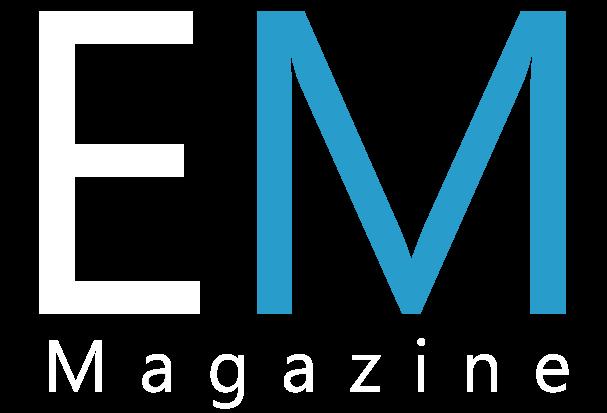
HEAT PUMPS 33 ENERGY MANAGER MAGAZINE • JUNE 2024 THE ONLY PUBLIC SECTOR ENERGY JOURNAL Register now to receive your digital issue of Energy Manager Magazine FREE of charge energymanagermagazine. co.uk/subscribe Image © East Street Imagery

THE BETTER THE DATA, THE BETTER THE HEAT PUMP PERFORMANCE
As energy managers start to consider the options for decarbonising heat in their buildings, heat pumps will frequently be the favoured solution. Certainly, high temperature air source heat pumps (HT ASHPs) like our Auriga+ R290 (propane) series bring greater design options in existing buildings. But swapping out boilers for heat pumps is not always as simple as it is made out to be. And this is where taking time to gather real, measured data on the existing building and heating system can be beneficial.
UNDERSTANDING THE BUILDING’S THERMAL PROFILE
The merits of ASHPs are well established and introducing them into older buildings is certainly possible. However, there is no escaping the fact that it is frequently more complicated than in new buildings which are designed to be net zero.
One of the problems with existing buildings is the lack of thermal modelling and legacy issues. In dated buildings, any design information is limited at best. However, a full understanding of the thermal performance of a building is absolutely essential in order to develop solutions that will improve its operational efficiency.
So what data do we need to truly understand the building? Information relating to comfort levels in the building, the original design temperature and loads, any hydronic inefficiencies, as well as changes to the building and/or heating system, is key. Are there any bounding constraints? Are electrical capacities sufficient? Does budget allow for 100% of the required heating power to be via ASHP? Is there adequate space? And are there any complementary technologies that could support the operation of an ASHP, such as solar PV? The aim is to understand what may be able to change and what cannot, as well as any risks.
Installing ultrasonic heat meters, carrying out a detailed heat loss calculation, and analysing gas meter
Real measured data of a building, including its thermal profile and energy usage, is critical to designing successful heat pump solutions, says Andy Green, Baxi’s Head of Technical Solutions.
readings will then provide deeper insight. An optimal scenario would involve a year’s worth of data with installation planned for warmer months.
FABRIC FIRST
As part of this investigative predesign process, it’s advisable to identify any feasible opportunities for fabric upgrades. A fabric first approach should always be the initial consideration when considering a switch to heat pumps to reduce heat loss from a building. The benefit of reducing heat loss is that it can significantly reduce the size or capacity of plant required – thereby reducing capital expenditure - while improving running costs by limiting heat loss to the environment. One example might be to improve insulation.
OPTIONEERING
With fabric upgrades addressed, heat experts like Baxi can then use this real measured data to engineer different solution scenarios. Optioneering is a valuable design support process that enables energy managers and designers to make the best choice for a specific building within the project requirements and constraints. The digitally produced solutions, backed with predicted energy and carbon savings and capital expenditure modelling, provide precise, validated advice to help make the move to low carbon heat more seamless.
HYBRID SOLUTIONS
While the initial intent and brief may be to move directly from gas boilers to

full electrification of heat, depending on the building and the retrofit challenges, a compromise may be required. A hybrid solution is nearly always a fast, efficient and affordable answer so should not be overlooked as an achievable option on the road to net zero. After all, even a modestly sized heat pump will enable a large portion of the heat in the building to be decarbonised. As such, a hybrid system can be a quick win solution for energy managers, delivering immediate sustainability improvements while overcoming major challenges including budget and risk.
OPTIMISATION
Once the design is locked in, it’s advisable to set performance targets that should be reviewed on a regular basis to ensure that the building is performing as designed.
When the targets have been hit, close monitoring will then open up the opportunity to identify and implement additional improvements to optimise the solution and deliver still greater savings.
In conclusion, the more accurate the data, the better the heat pump performance and value – and the more truly sustainable the solution. Having real, measured data allows for the possibility to design and evaluate multiple validated solution scenarios and, in so doing, arrive at the best solution in every case.
For more information on Baxi’s commercial heat pumps, visit: https:// www.baxi.co.uk/landing-pages/ baxi-auriga-air-source-heat-pump
HEAT PUMPS 34 ENERGY MANAGER MAGAZINE • JUNE 2024



Join professionals from over 150 different countries worldwide and enrol onto the Renewable Energy Institute’s accredited training courses.
Join professionals from over 150 different countries worldwide and enrol onto the Renewable Energy Institute’s accredited training courses.
All courses are available to study Online, On-demand, providing flexibility to study whenever suits you. All courses can be viewed at www.renewableinstitute.org
All courses are available to study Online, On-demand, providing flexibility to study whenever suits you. All courses can be viewed at www.renewableinstitute.org
We also have a selection of our courses available to study in the Live Virtual Classroom. The Live Virtual Classroom course will run on set dates and will feature 1-2 full days (9am–5pm UK time) of interaction
We also have a selection of our courses available to study in the Live Virtual Classroom. The Live Virtual Classroom course will run on set dates and will feature 1-2 full days (9am–5pm UK time) of interaction and networking with

and networking with the lecturer and other delegates. You will have the opportunity to sit the internationally recognised Galileo Master Certificate exam online at the end of the course.
the lecturer and other delegates. You will have the opportunity to sit the internationally recognised Galileo Master Certificate exam online at the end of the course.
All courses are CPD accredited and contribute to your professional development.
All courses are CPD accredited and contribute to your professional development.
On completion of your studies, you will receive 1 year of complimentary REI membership.
On completion of your studies, you will receive 1 year of complimentary REI membership.
For further information, reach out to the REI at +44 131446 9479 or via email at training@renewableinstitute.org
For further information, reach out to the REI at +44 131446 9479 or via email at training@renewableinstitute.org

35 ENERGY MANAGER MAGAZINE • JUNE 2024 TRAINING

RINNAI CHECKS IN TO HEATHROW HOTEL WITH ENERGY EFFICIENCY AND HIGH PERFORMANCE ON HOT WATER HEATING
London’s Heathrow is one of the busiest airports in the world - handling over twenty million passengers each year. The area around Heathrow also has one of the highest densities of hotels in the world. Hotels come at all stages of the star rating system - from 5-star luxury to the budget minded. One of the more up market 5-star hotels, set in over ten acres of lush meadow and woodland, is just a 20-minute chauffeur driven car journey to the Heathrow terminals.
Recently the hotel updated its heating and hot water system to its seventy bedrooms, leisure & spa centre and Michelin starred kitchens using Rinnai Hydrogen blend ready 20% continuous flow water heaters.
The site includes a top-class restaurant, a Polo Bar and Lounge plus an outdoor terrace to indulge in an Afternoon Tea. There is also a fitness zone, two outdoor tennis courts, and a croquet lawn.
A feasibility study conducted by the Rinnai in house design team looked at replacing two aging atmospheric water heaters, joined into a flue dilution system. The study concluded that the existing units of 287 liters each plus existing outputs, were of a sufficient capacity to meet the current demand of guests, kitchens, housekeeping etc.
The feasibility study concluded that the hotel could reduce its carbon from hot water generation if they switched from the existing storage-based system and installed a turnkey package of two Rinnai N Series Hydrogen blend ready 20% continuous flow water heaters plus a 500 L hot water store.
The solution was deemed a viable option for the following benefits:
• Reduced onsite carbon
Reduced capital expenditure costs
Reduced operational expenditure costs
ACOP/L8 Compliance
Hydrogen-blends ready
• 26:1 turndown ratio 4.4kW to 112kW
• Fifty percent redundancy should a unit fail.
• No single point of failure
• Cylinder would weigh approx. 90kg.
• 12-year warranty
The Rinnai Sensei N Series hydrogen blends ready 20% continuous flow hot water heater range offers a more compact, enhanced combustion design
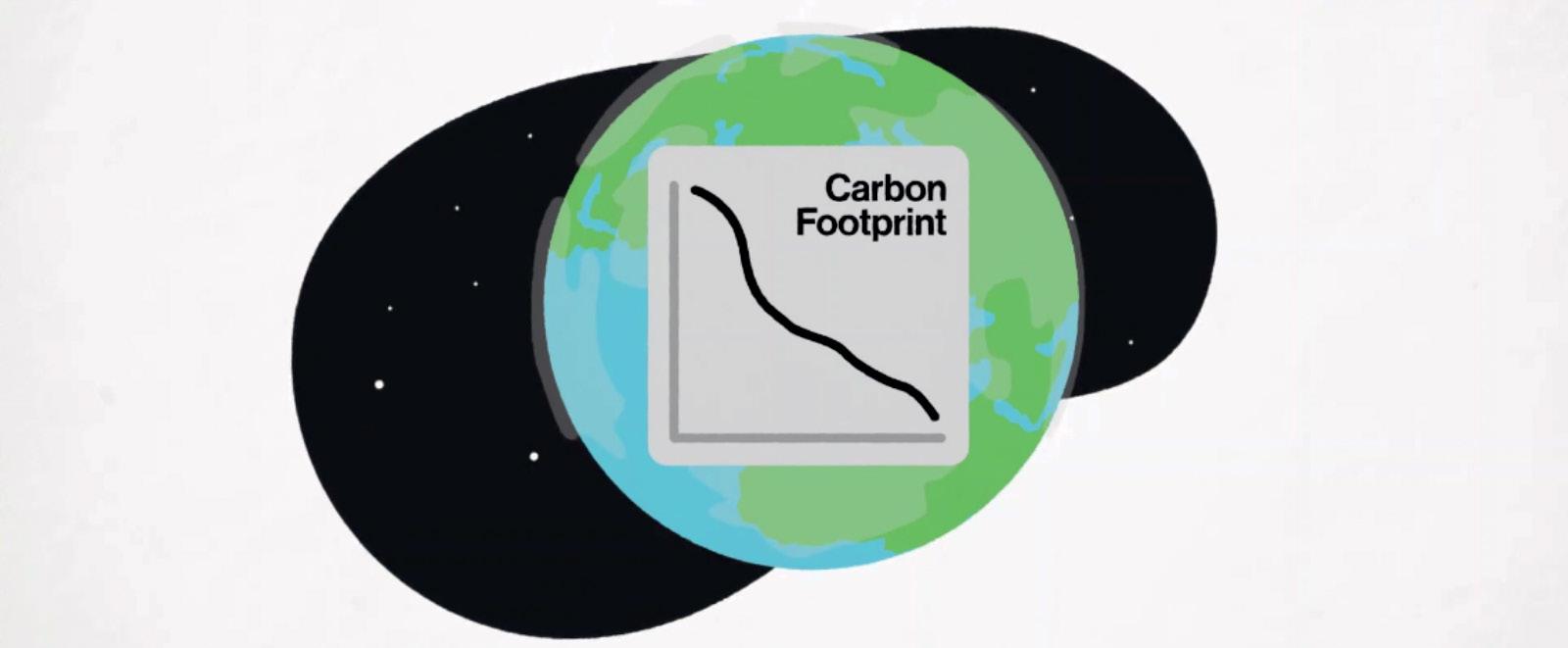
that allows for easier installation, superior operational performance as well as ease of serviceability.
The Rinnai Series is the first ever continuous flow hot water heating unit manufactured with stainless steel heat exchangers to be available in the UK - this gives an extended working life at optimum performance to each of the four models in the range. Added to this are the market leading extended warranties, which accompany the hydrogen Blend-ready 20% and Bio-LPG ready instantaneous water heaters.
The four models are: the N1600i giving 954 litres per hour (at 50 degrees)
• the N1600e (external) also giving 954 litres per hour (at 50 degrees).
• the N1300i giving 775 litres per hour and
• the N1300e also giving 775 litres per hours of temperature controlled hot water at 50 degrees. The two 1600s have load profiles of XXL and are water efficiency class A rated, while the 1300s are load profile XL and are also water efficiency class A rated. All the range is also low-NOx (Less than 26ppm meaning they gain additional points under BREEAM) and the futureproofed continuous flow

water heater uses Rinnai’s patented advanced burner technology with a 13-1 turn down ratio – the largest on the market combined with 96% efficiency rating. Integral controls on the units enable the water heater to achieve high efficiencies because of advanced burner control and high modulation ranges. This wide range of modulation means that energy usage is completely optimised as the water heater through smart inbuilt controls will only heat the water to the temperature required thus preserving energy.
Rinnai offer sizing and support services to ensure that the optimum solution if created for your project whether that be gaseous continuous water heaters, Hybrid water heating systems or commercial heat pumps for support contact Rinnai today for your free site consultation. www.rinnai-uk.co.uk/ contact-us/help-me-choose-product
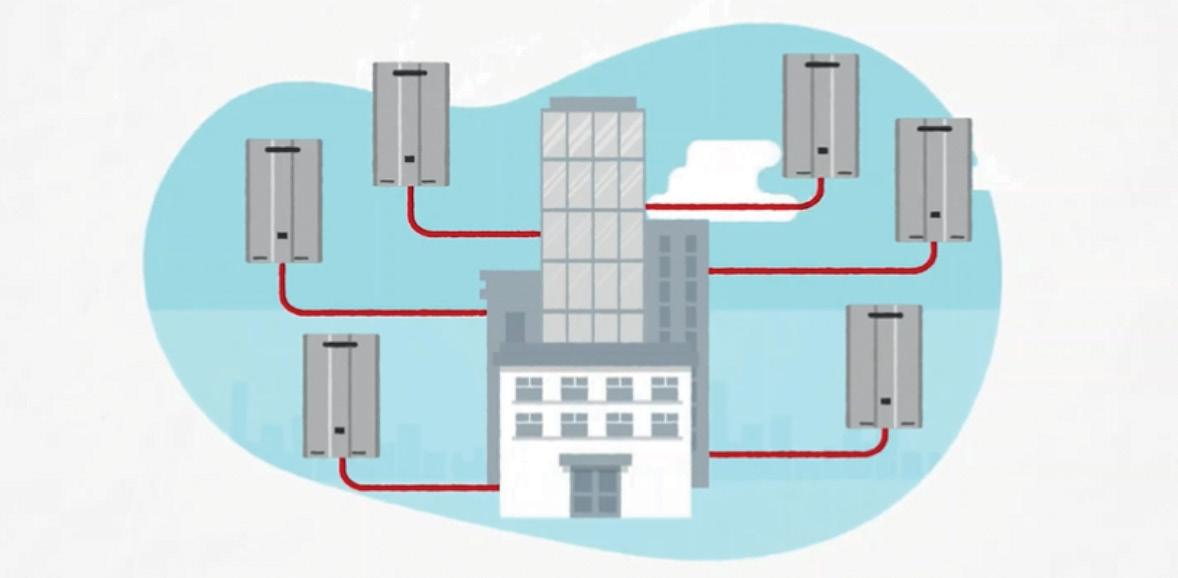
36 SHOWCASE ENERGY MANAGER MAGAZINE • JUNE 2024

SHARP UNVEILS NU-JC440 AND NU-JC430B, ITS LATEST SOLAR MODULE LINEUP, FEATURING WATTAGE UPGRADES
Sharp Energy Solutions Europe introduces its newest PV modules with rectangular n-Type TOPCon half-cut cell technology: the NU-JC440 and the NU-JC430B.
The high-efficiency 440W n-Type TOPCon monocrystalline silicon photovoltaic panel comes with a sleek black frame and a white backsheet. The all-black NU-JC430B, a 430W n-Type TOPCon monocrystalline silicon photovoltaic panel, features a black backsheet and a black frame.
The all-black NU-JC430B and the NU-JC440 panels are built with rectangular M10R (182.2mm*183.75mm) half-cells. Rectangular cells feature different cell dimensions, resulting in improved performance.
Utilising round ribbons in the 16-busbar technology reduces susceptibility to microcracks and increases module reliability.
The panels are fitted with the MC4 connector to ensure compatibility with a wide range of optimisers and inverters that are popular in the market.
The NU-JC440 boasts an impressive efficiency rating of 22.53% and the NUJC430B comes with 22.02%. The excellent low temperature coefficient of --0.300%/°C
of both panels significantly enhances performance at elevated ambient temperaturesan important feature due to the impact of climate change and the resulting temperature increases.
With measurements of 1722 x 1134 mm and a slim 30 mm frame height, the NUJC440 and NU-JC430B weigh in at 20.7 kg. These specifications make it an ideal choice for straightforward installation in residential, small-scale commercial, and industrial rooftop systems with seamless system integration. The panel’s adaptability to various mounting methods, including short and long frame side clamping, screwing, and sliding, allows for flexible assembly- leading to a reduced balance of system and capital expenditure costs.

IEC seals (IEC61215 and IEC61730). The panels have undergone rigorous testing to comply with international standards and withstand extreme conditions, successfully passing tests for ammonia, salt mist and PID resistance. The panels have also passed the strict EN13501 ‘reaction to fire’ test, thus demonstrating their exceptional safety and reliability.
Every Sharp half-cell module comes with three compact junction boxes, each incorporating a bypass diode. This design minimises heat transfer to the cells above, thereby improving panel durability and enhancing overall system performance.
The panel’s safety, quality, and durability have been recognised by the awarding of
The NU-JC440 and the NU-JC430B are covered by Sharp’s 25-year EU end user product guarantee and 30-year linear power output guarantee with a minimum of 87.5% in year 30, valid for European rooftop installations.
For more information please visit: www.sharp.eu/solar
JOHNSON CONTROLS FORMS DATA CENTRE SOLUTIONS ORGANISATION TO MEET GROWING DEMAND
Johnson Controls has announced the creation of a dedicated Global Data Centre Solutions organisation focused specifically on operationalising Johnson Controls’ global scale to provide integrated solutions to data centre customers around the world in support of the company’s business segments. Todd Grabowski, president, Global Data Centre Solutions, will lead the Global Data Centre Solutions organisation, reporting directly to Chairman and CEO George Oliver. Johnson Controls’ products and solutions are already widely used in the most demanding data centres in the world. The company has a unique portfolio of integrated solutions that help minimise costs, maximise efficiency, and optimise timing for data centre owners. JCI is well-positioned to capitalise on rapidly increasing demand in the emerging data centre market due to its relentless innovation efforts and inherent
strategic advantages, including:
Creating leading technologies around a broad range of aircooled and water-cooled chillers to support the continued growth in cooling demand;
Investing in R&D and world-class test laboratories to design, build, test and demonstrate performance of equipment and accelerate the pace of innovation; and Building leading domain expertise to provide complete package solutions that drive outcomes while providing service for the entire life cycle of the asset.
“Solving customer problems today and in the future is what we do best at Johnson Controls. We have optimised our investments and solutions to ensure we are uniquely qualified to provide the differentiated outcomes data centre customers need and expect from an

industry leader like Johnson Controls,” said Grabowski. “Our global footprint allows us to scale and deploy these solutions wherever they are needed and earn longterm connection with those customers through our unparalleled service offerings.”
To learn more about Johnson Controls Data Centre Solutions, visit: www.johnsoncontrols.co.uk/ industries/data-center
37 ENERGY MANAGER MAGAZINE • JUNE 2024 SHOWCASE

WATER MANAGEMENT
DATA CENTRES & WATER SECURITY: RISKS & SOLUTIONS
As convenient as it very well may be for people to live in the digital age, the same cannot be said for the environment and the ecological footprint of technology is certainly not something to be ignored, particularly as time goes on and the world becomes increasingly connected in this regard.
In order to facilitate all this connectivity and to drive the emergence of new and innovative tech, data centres are essential, fully equipped with technology like servers, networking equipment, storage devices and so on that manage and distribute vast amounts of data across a range of devices and locations on a global scale.
There are thousands of these data centres all over the world, the majority of which are located in the US, followed by Germany, the UK and China, all designed to meet the needs of specific data storage, processing and distribution applications to provide the necessary support for 21st century IT operations.
These data centres contain multiple servers, storage devices and other hardware to allow communication and provide data access - and they generate a significant amount of heat as a result of their day-to-day operations.
As such, they’re fitted with advanced cooling systems like liquid cooling and industrial air conditioning and ventilation to ensure that the centres maintain a constant temperature so that devices don’t overheat.
POWER HUNGRY
In terms of energy consumption, it’s estimated that data centres are responsible for up to three per cent of total global electricity generation - and this is expected to increase to four per cent by the year 2030.
The good news is that in a bid to drive down their overall carbon footprint, an increase in regulation and third-party oversight is now being seen to help reduce the sector’s contributions to climate change.
But it’s not just energy that needs to be considered and data centre water consumption is also a growing concern when set against the backdrop of water stress and scarcity, with projections now suggesting that there could be a 40 per cent gap between global freshwater supply and demand by 2030.
Of course, water is required for data centre construction and materials manufacturing in the first instance, but resources are also required in
order to operate these facilities, both directly and indirectly.
And it seems as though the problem may get worse before it gets better thanks to the rise of artificial intelligence (AI), with a new report from non-profit organisation China Water Risk revealing that, while the 4.3 million data centre racks in China currently consume approximately 1.3 billion m3 of water, this could increase to more than three billion m3 by 2030.
As AI continues to take hold and services like chatbots become more commonplace, the report suggests that more than 20 times the current amount of water will be needed as a result.
Part of the problem in China is that 46 per cent of the nation’s data centre racks are located in arid regions, with at least 41 per cent situated in places that are especially prone to drought.
Furthermore, at least 28 per cent are in places highly prone to flooding, while at least one-fifth are in regions that are particularly prone to both.
On a global scale, because AI capabilities need to have huge volumes of data in order to operate, water consumption is only going to increase, with figures published by the Organisation for Economic Cooperation and Development showing that Google’s onsite water consumption rose by 20 per cent in 2022 compared to 2021. Microsoft, meanwhile, saw a 34 per cent hike over the same timeframe.
Since AI is here to stay and the world is only going to become more connected, not less, the question must now be asked:
WHAT CAN BE DONE TO REDUCE DATA CENTRE WATER FOOTPRINTS?
There are plenty of opportunities for data centres to reduce their freshwater demand, one of which is treating and using reclaimed water for their cooling systems. This would significantly reduce freshwater abstraction and safeguard supplies in local communities, particularly in places where water security is already at risk.
Prioritising water leak detection and

repair can also make a huge difference to the amount of water being wasted. In England, for example, three billion litres of water are lost each day through leakage, so finding weak spots across the network would help build resilience into data centre operations.
Investing in other technology like free cooling systems could be particularly advantageous, since this would mean that no water is required to keep the centres cool. Instead, cool air is captured directly from outside before being directed into equipment rooms to prevent overheating.
Some centres are also now using a method known as adiabatic cooling, where droplets of water are sprayed into the air to cool it down, even by a couple of degrees, which helps to keep the temperature down so that there’s less need for cooling systems to be operational.
However, while these solutions are indeed welcome, they don’t remove the need for cooling systems altogether, so it will become increasingly important for data centres to find new and innovative ways to reduce their impact on the environment as far as they possibly can.
Direct liquid cooling, for example, could be particularly effective, where water is passed through the servers to keep them cool without wasting any resources thanks to the system’s closed circuit capabilities.
Similarly, immersion cooling could be another alternative to the problem, where equipment is immersed in either a tank of water or a tank of oil to remove heat output more efficiently. Again, this is another closed circuit system so no water is wasted, making it a particularly attractive option.
Ultimately, different data centres will have specific issues they need to address based on their size and location so there is no one-sizefits-all solution that can be adopted… but, regardless, it’s becoming increasingly clear that the sector will need to find answers and fast if the unquenchable thirst of the digital age isn’t to have disastrous consequences for one and all. www.switchwatersupplier.com
38
ENERGY MANAGER MAGAZINE • JUNE 2024
Image: Pete Linforth from Pixabay
OFF GRID WATER SUPPLY
BEFORE CONSIDERING AN OFF GRID WATER SUPPLY LETS FIRST EXPLAIN WHERE YOUR WATER COMES FROM?
Well we all take the water for granted without giving it a second thought, its human nature, turn on the tap and water flows, its a process we all take for granted.
All water comes from rainfall but where water companies take it from varies as water is collected from above and below ground.
Starting from above ground, water is abstracted from rivers and reservoirs all of which is treated and supplied to you the customer through a vast array of pipes and pumping stations at great cost.
Below ground water is again abstracted from natural underground water storage from aquifers which are a critical source of water supply for most water supply companies, probably supply most of the water we use today, so aquifers are a critical source of water supply.
HOW ARE AQUIFERS SUPPLIED?
Water in aquifers comes from rain which soaks through the soil and gradually is absorbed by the porous underground rocks such as limestone and chalk.
Once this water is stored within these sponge like rocks water can move and collect in large underground spaces and be abstracted via alternative water supplies or boreholes to you and I.
The water is normally pumped into service reservoirs, treated then pumped through a large underground network of pipes to your premises and you the customer pay a set rate per cubic metres 220 gallons equals one cubic metre).
Share:

IF YOUR BUSINESS OR ORGANISATION A MEDIUM OR LARGE WATER USER?
For example: – Hotel, Pool and Leisure Complex, Manufacturing and production facility, Hospital, University, College, Leisure Park, Caravan Park, Zoo or Prison?
If your site is using anything above 30,000 cubic meters of water per year you really need to investigate the potential for an off grid water supply. Which could potentially supply your site with an off grid water supply at a fraction of what you are paying to your existing water supplier.

WHAT IS AN OFF GRID WATER SUPPLY?
In simple terms coming off mains water and tapping into underground water sources, taking your water from aquifers the same places as the water companies take their water from and charge you regulated water rates.
ASK YOURSELF THIS –WHY PAY MORE?
An off grid water supply is not for everyone as the water may not be available but asking the question costs you nothing.
An off grid water supply – the way to go for medium and high water users that will make a to your water bills
Call our expert water consultants today on 0845 658 0948 alternatively, you can email us at info@h2obuildingservices.co.uk
THE WATER AUDIT EXPERTS
hugedifference
FOCUS ON
FOR A SUCCESSFUL AND SUSTAINABLE TOMORROW
To engineer a more efficient, safer and sustainable world you need the right steam and thermal energy partner. Whatever your key drivers, Spirax Sarco have you covered.


Find out more at spiraxsarco.com/advance
VALUE TODAY
DELIVERING
Sustainability Efficiency Safety Energy Management



























































































